
Architects of Intelligence
by
Martin Ford
Published 16 Nov 2018
David was awarded the title of IBM Fellow (fewer than 100 of 450,000 hold this technical distinction) and has won many awards for his work creating UIMA and Watson, including the Chicago Mercantile Exchange’s Innovation Award and the AAAI Feigenbaum Prize. Chapter 20. RODNEY BROOKS We don’t have anything anywhere near as good as an insect, so I’m not afraid of superintelligence showing up anytime soon. CHAIRMAN, RETHINK ROBOTICS Rodney Brooks is widely recognized as one of the world’s foremost roboticists. Rodney co-founded iRobot Corporation, an industry leader in both consumer robotics (primarily the Roomba vacuum cleaner) and military robots, such as those used to defuse bombs in the Iraq war (iRobot divested its military robotics division in 2016).
…
What kinds of breakthroughs should we realistically expect? RODNEY BROOKS: You can never expect breakthroughs. I expect 10 years from now the hot thing will not be deep learning, there’ll be a new hot thing driving progress. Deep learning has been a wonderful technology for us. It is what enables the speech systems for Amazon Echo and Google Home, and that’s a fantastic step forward. I know deep learning is going to enable other steps forward too, but something will come along to replace it. MARTIN FORD: When you say deep learning, do you mean by that neural networks using backpropagation? RODNEY BROOKS: Yes, but with lots of layers.
…
The example people always give is the robot that would bring you a beer. It sounds like that might still be some way off. RODNEY BROOKS: Colin Angle, the CEO of iRobot, who co-founded it with me in 1990, has been talking about that for 28 years now. I think that I’m still going to be going to the fridge myself for a while. MARTIN FORD: Do you think that there will ever be a genuinely ubiquitous consumer robot, one that saturates the consumer market by doing something that people find absolutely indispensable? RODNEY BROOKS: Is Roomba indispensable? No, but it does something of value at a low enough cost that people are willing to pay for it.

Wired for War: The Robotics Revolution and Conflict in the 21st Century
by
P. W. Singer
Published 1 Jan 2010
Singer, November 17, 2006. 130 Special forces roles were felt Robert Finkelstein and James Albus, “Technology Assessment of Autonomous Intelligent Bipedal and Other Legged Robots” (DARPA, 2004). 130 “As technology advances” Ibid. 130 “2035 [that] we will have robots” Ibid. 131 “Common sense is not a simple thing” Ray Kurzweil, The Singularity Is Near: When Humans Transcend Biology (New York: Viking, 2005), 177. 131 our “emotional intelligence” Ibid., 191. 131 Rod Brooks of MIT and iRobot predicts Rodney Brooks, Flesh and Machines: How Robots Will Change Us (New York: Pantheon, 2002), 22. 131 “My job will be eliminated” As quoted by David Bruemmer, “Intelligent Autonomy for Unmanned Vehicles,” paper presented at the Military Robotics Conference, Institute for Defense and Government Advancement, Washington, DC, April 10-12, 2006. 131 “Asking whether robots” Rodney Brooks, interview, Peter W. Singer, Washington, DC, October 30, 2006. 132 Haile, a robot musician Gil Weinberg and Scott Driscoll, “Haile,” 2006 (cited July 7, 2007); available at http://www-static.cc.gatech.edu/~gilwein/Haile.htm 132 understand and interact with human musicians Matthew Abshire, “Musical Robot Composes, Performs and Teaches,” CNN.com, October 3, 2006 (cited October 3 2006); available at http://www.cnn.com/2006/TECH/10/03/musical.robot/index.html 132 “I firmly believe” H.
…
Eric Drexler, “Nanotechnology: Six Lessons from Sept. 11,” Open Letter, Foresight Institute, December 2001. 422 “We’ve got to be pro-active” Ibid. 422 “We have to manage the ethics” Habershon and Woods, “No Sex Please, Robot, Just Clean the Floor.” 422 “Ethicists have written at length” Nick Bostrom, “Nanotechnology Perceptions: A Review of Ultraprecision,” Nanotechnology Perceptions: A Review of Ultraprecision Engineering and Nanotechnology 2, no. 2 (2006). 423 “People ask me about” Rodney Brooks, interview, Peter W. Singer, October 30, 2006. 423 “Asimov’s rules are neat” Daniel Wilson, interview, Peter W. Singer, October 19, 2006. 423 “realized during a robot exhibition” “Trust Me, I’m a Robot,” Economist 379, no. 8481 (2006): 20. 423 “You don’t want to tell” Mark Barber, “Force Protection Robotics,” paper presented at the Military Robotics Conference, Institute for Defense and Government Advancement, Washington, DC, April 10-12, 2006. 423 “There is a lot of push” Rodney Brooks, interview, Peter W. Singer, October 30, 2006. 424 “Businesses are notoriously uninterested” Robert Sawyer, “On Asimov’s Three Laws of Robotics,” 1994 (cited November 1, 2007); available at http://www.sfwriter.com/rmasilaw.htm 424 “We can’t simply do our science” Bill Joy, “Forfeiting the Future,” Resurgence no. 208 (2001), http://www.resurgence.org/resurgence/issues/joy208.htm 424 “I gave him a six-foot extension cord” Roger Nygard, “Grief Counseling,” The Office, produced by B.
…
When I arrive for my visit, some of the employees are testing out a tracked robot, driving it down the hallway with a jury-rigged Xbox video game controller. Think Office Space crossed with Asimov. iRobot was founded in 1990 by three MIT computer geeks, Colin Angle, the CEO, Helen Greiner, the chairman of the board, and Rodney Brooks, their former professor, who doubled as chief technical officer. Brooks was already considered one of the world’s leading experts on robotics and artificial intelligence, Greiner would eventually be named one of “America’s Best Leaders” by U.S. News & World Report, and Angle’s work would become so influential that his undergrad thesis paper ended up at the Smithsonian. iRobot, though, was no sure thing at the start.

Machines of Loving Grace: The Quest for Common Ground Between Humans and Robots
by
John Markoff
Published 24 Aug 2015
Interface Agents: Excerpts from Debates at IUI 97 and CHI 97,” Association for Computing Machinery Interactions, November-December 1997, http://ritter.ist.psu.edu/misc/dirk-files/Papers/HRI-papers/User%20interface%20design%20issues/Direct%20manipulation%20vs.%20interface%20agents.pdf. 27.Ibid. 6|COLLABORATION 1.Rodney Brooks, Flesh and Machines: How Robots Will Change Us (New York: Pantheon, 2002), 28. 2.Ibid., 29. 3.Ibid., 31. 4.Rodney Brooks, “Elephants Don’t Play Chess,” Robotics and Autonomous Systems 6 (1990): 3–15, people.csail.mit.edu/brooks/papers/elephants.ps.Z. 5.Ibid. 6.Brooks, Flesh and Machines, 31. 7.Steven Levy, Hackers: Heroes of the Computer Revolution (New York: Anchor Press/Doubleday, 1984), 132. 8.R.
…
In one sense it is the ultimate religious belief in the power of technology-driven exponential curves, an idea that has been explored by Robert Geraci in Apocalyptic AI: Visions of Heaven in Robotics, Artificial Intelligence, and Virtual Reality. There he finds fascinating sociological parallels between singularity thinking and a variety of messianic religious traditions.39 The singularity hypothesis also builds on the emergent AI research pioneered by Rodney Brooks, who first developed a robotics approach based on building complex systems out of collections of simpler parts. Both Kurzweil in How to Create a Mind: The Secret of Human Thought Revealed and Jeff Hawkins in his earlier On Intelligence: How a New Understanding of the Brain Will Lead to the Creation of Truly Intelligent Machines attempt to make the case that because the simple biological “algorithms” that are the basis for human intelligence have been discovered, it is largely a matter of “scaling up” to engineer intelligent machines.
…
That conversation led to Beckman funding Shockley Semiconductor Laboratory as a Beckman Instruments subsidiary, but passing on the opportunity to purchase Shockley’s robotic eye. Shockley had written his proposal to replace workers with robots amid the nation’s original debate over “automation,” a term popularized by John Diebold in his 1952 book Automation: The Advent of the Automatic Factory. Shockley’s prescience was so striking that when Rodney Brooks, himself a pioneering roboticist at the Stanford Artificial Intelligence Laboratory in the 1970s, read Brock’s article in IEEE Spectrum in 2013, he passed Shockley’s original 1951 memo around his company, Rethink Robotics, and asked his employees to guess when the memo had been written. No one came close.
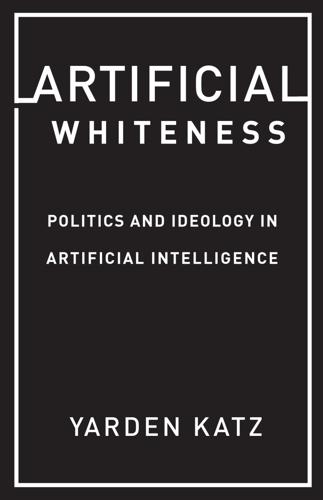
Artificial Whiteness
by
Yarden Katz
They had no awareness of self, and no awareness that they were cleaning, or ‘feeding,’ in any sense; no sense or internal representation of agency. If they fed a lot, their bin full sensor would say they were ‘satiated,’ but there was no connection between those two events inside the robot in any way, whether physically or in software. No adaptation of behavior based on past experience.” Rodney Brooks, “What Is It Like to Be a Robot?,” Rodney Brooks Blog: Robots, AI, and Other Stuff, 2017. 54. Lucy Suchman, “Situational Awareness: Deadly Bioconvergence at the Boundaries of Bodies and Machines,” MediaTropes Test Journal 5 no. 1 (2015): 1–24. 55. iRobot has since migrated its war-related operations into another company called Endeavor Robotics.
…
The simulated battlefield is constructed from a Cold War mindset; “agents” in the program are modeled after “Soviet Regiments.”64 In their report for DARPA, AI practitioners evaluated SAFOR using a mix of technical considerations (such as whether the agency chose the right programming language) and tactical ones (like whether the use of AI would achieve the military’s aims in a cost-effective way). For example, Rodney Brooks, a prominent AI researcher from MIT, considered the advantages of scaling up the program so that soldiers may “experience some of the large scale aspects of battle that are not generated by, say, 300 tank simulators.”65 Brooks also considered the finances of the project, pointing out “that for significantly less than $20B it would be possible to replicate the current hardware to provide enough simulators that the whole U.S.
…
They claim that “cognitive science cannot be separated from cognitive technology”—and therefore, embodied ideas must show their value pragmatically by helping to build “truly intelligent, cognitive artifacts.”50 This pragmatism leads them to search for examples of successful “applied” embodied AI. For VTR, the field of situated robotics—and the work of AI practitioner Rodney Brooks, in particular—provides such an example. Other critics of AI’s orthodoxy have also looked to situated robotics as a viable alternative. In the next section I examine the context in which situated robotics developed, in order to see how notions of embodiment work in practice. What kind of “cognitive artifacts” did these ideas help create?

Possible Minds: Twenty-Five Ways of Looking at AI
by
John Brockman
Published 19 Feb 2019
The human use of human beings will soon be changed—once again—forever, but we can take the tiller and steer between some of the hazards if we take responsibility for our trajectory. Chapter 6 THE INHUMAN MESS OUR MACHINES HAVE GOTTEN US INTO RODNEY BROOKS Rodney Brooks is a computer scientist; Panasonic Professor of Robotics, emeritus, MIT; former director of the MIT Artificial Intelligence Laboratory and the MIT Computer Science & Artificial Intelligence Laboratory (CSAIL). He is the author of Flesh and Machines. The roboticist Rodney Brooks, featured in Errol Morris’s 1997 documentary Fast, Cheap & Out of Control along with a lion tamer, a topiarist, and an expert on the naked mole rat, was described by one reviewer as “smiling with a wild gleam in his eye.”
…
George Dyson: The Third Law Any system simple enough to be understandable will not be complicated enough to behave intelligently, while any system complicated enough to behave intelligently will be too complicated to understand. CHAPTER 5. Daniel C. Dennett: What Can We Do? We don’t need artificial conscious agents. We need intelligent tools. CHAPTER 6. Rodney Brooks: The Inhuman Mess Our Machines Have Gotten Us Into We are in a much more complex situation today than Wiener foresaw, and I am worried that it is much more pernicious than even his worst imagined fears. CHAPTER 7. Frank Wilczek: The Unity of Intelligence The advantages of artificial over natural intelligence appear permanent, while the advantages of natural over artificial intelligence, though substantial at present, appear transient.
…
The Fifth Generation: Artificial Intelligence and Japan’s Computer Challenge to the World was published in 1983. We had a code name for the project: “It’s coming, it’s coming!” But it didn’t come; it went. From that point on I’ve worked with researchers in nearly every variety of AI and complexity, including Rodney Brooks, Hans Moravec, John Archibald Wheeler, Benoit Mandelbrot, John Henry Holland, Danny Hillis, Freeman Dyson, Chris Langton, J. Doyne Farmer, Geoffrey West, Stuart Russell, and Judea Pearl. AN ONGOING DYNAMICAL EMERGENT SYSTEM From the initial meeting in Washington, Connecticut, to the present, I arranged a number of dinners and discussions in London and Cambridge, Massachusetts, as well as a public event at London’s City Hall.
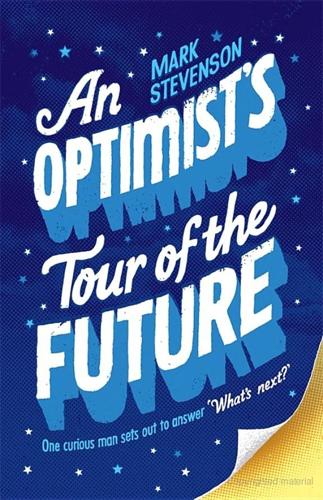
An Optimist's Tour of the Future
by
Mark Stevenson
Published 4 Dec 2010
Professor Breazeal is trying to build an autonomous, social robot – a robot we’d be happy to treat as a living (if not breathing) entity and not just an arrangement of servos, computers and sensors. She wants to create a personality we can interact and work with, even be friends with – to all intents and purposes, an intelligent, social, multipurpose machine. This scares the hell out of a lot of people. As Breazeal’s former mentor, the restive, maverick genius Rodney Brooks, opens his book Robot: The Future of Flesh and Machines: ‘As these robots get smarter, some people worry about what will happen when they get really smart. Will they decide that we humans are useless and stupid and take over the world from us?’ We’re weaned on a diet of Hollywood movies that generally cast future robots as perilous weapons of war and aggression (The Terminator) or scheming murderers (like the iconic HAL in 2001: A Space Odyssey), with only the occasional Wall-E as light relief.
…
In 1997, IBM’s computer Deep Blue beat chess grandmaster Garry Kasparov. This is seen, rightly, as a landmark moment in AI research, but it’s part of an old AI tradition of trying to get machines to replicate highly intellectual ‘symbolic’ reasoning (the sort you need to master algebra, for instance, and the kind of tasks revered, says Rodney Brooks, by ‘highly educated male scientists’). It’s no coincidence that the frontiers of AI research seem to have been populated with computers that get ever better at playing chess. But the big elephant in the room for this kind of AI research is that Elephants Don’t Play Chess (this being the title of a paper Brooks wrote in 1990), but they do do any number of ‘common-sense’ things that machines can’t – as can dogs, cats and preschool children.
…
At this point we hope they feel some responsibility for their ancestors and don’t break us down for raw materials, try to hunt us to extinction (Terminator) or (yes, Matrix fans) use us for batteries. They rule us, and our fate will be in their hands. Option three is that man and machine merge. As I found out during my chat with Nick Bostrom, this is already happening. In the opening pages of Robot, Rodney Brooks writes, ‘Recently, I was confronted with a researcher in our lab, a double-leg amputee, stepping off the elevator that I was waiting for. From the knees up he was all human, from the knees down he was robot.’ In late 2009, Robin af Ekenstam became the first recipient of ‘SmartHand’ – a prosthetic mechanical hand that not only replicates the movement of its human equivalent, but also provides Robin with a sense of touch (the replacement hand is wired to existing nerve endings in the stump left after he lost his original hand to cancer).

The Road to Conscious Machines
by
Michael Wooldridge
Published 2 Nov 2018
This time, the paradigm being questioned was not just the ‘Knowledge is power’ doctrine that had driven the expert systems boom, but the basic assumptions that had underpinned AI since the 1950s, symbolic AI in particular. The fiercest critics of AI in the late 1980s, though, were not outsiders, but came from within the field itself. The most eloquent and influential critic of the prevailing AI paradigm was the Australian-born roboticist Rodney Brooks. Born in 1954, Brooks seemed like an unlikely candidate to be a vocal critic of AI. He had studied and worked at the three leading centres of AI research: Stanford University, Massachusetts Institute of Technology and Carnegie Mellon University. Brooks’ main interest was in building robots that could carry out useful tasks in the real world.
…
It doesn’t remotely have the same kind of generality of intelligent capabilities that we all have. It can play board games superbly, but it can’t converse or make a joke or cook an omelette or ride a bicycle or tie a pair of shoelaces. Its remarkable abilities are still actually very narrow. And of course, board games are highly abstract – they are a long way from the real world, as Rodney Brooks would be quick to remind us. But whatever niggles and caveats one might have, I believe the simple truth is that DeepMind’s work, starting with their Atari player through to AlphaZero, represented an extraordinary series of breakthrough achievements in AI. And in doing all this, they managed to capture the imagination of millions.
…
Your understanding of the picture is therefore grounded in your experiences as a person in the world. Such an understanding is not possible for CaptionBot, because CaptionBot has no such grounding (and nor, of course, does it purport to). CaptionBot is completely disembodied from the world, and as Rodney Brooks reminded us, intelligence is embodied. I emphasize that this is not an argument that AI systems cannot demonstrate understanding, but rather that understanding means more than being able to map a certain input (a picture containing Matt Smith) to a certain output (the text ‘Matt Smith’). Such a capability may be part of understanding, but it isn’t by any means the whole story.

Rule of the Robots: How Artificial Intelligence Will Transform Everything
by
Martin Ford
Published 13 Sep 2021
The motors and sensors required to replicate that ability in a robotic hand would be expensive—even if the controlling software to make it possible were available. The reality is that, even after decades of work on robotic hands and the algorithms required to animate them, their dexterity is not yet close to human level. Rodney Brooks, one of the world’s foremost roboticists and a co-founder of iRobot Corporation, the makers of the Roomba as well as some of the world’s most advanced military robots, illustrates this by alluding to the long reach plastic gripper tools that you often see being used to pick up trash: That really primitive [gripper] can do fantastic manipulation beyond what any robot can currently do, but it’s an amazingly primitive piece of plastic junk.… That’s the clincher: you are doing the manipulation.
…
The average guess was the year 2099, or roughly eighty years from now.i,63 The predictions are neatly bracketed by guesses from two people who were willing to go on the record. Ray Kurzweil, as we’ve seen, remains adamant that human-level AI will come into existence by 2029—now just eight years away. Rodney Brooks, a co-founder of iRobot Corporation and widely regarded as one of the world’s foremost roboticists, thinks it will take nearly 180 years for AGI to arrive. This gaping chasm between predictions—with multiple researchers anticipating human-level AI within a decade or two, whereas others think it could be centuries—is, I think, a vivid illustration of just how unpredictable the future of artificial intelligence is likely to be.
…
A common refrain is that the emergence of superintelligence is so far off, and the specific parameters of the problem to be solved so nebulous, that there’s little point in pursuing the issue. Andrew Ng, who led AI research groups at Google and Baidu, is famous for saying that worrying about an existential threat from AI is like worrying about overpopulation on Mars—long before even the first team of astronauts has been sent to the red planet. The roboticist Rodney Brooks echoes this sentiment, saying that superintelligence is so far in the future that “it’s not going to be a case of having exactly the same world as it is today, but with an AI superintelligence in the middle of it.… We have no clue at all about what the world or [a superintelligent AI system] are going to be like.
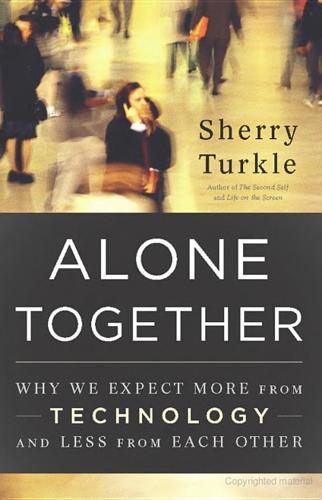
Alone Together
by
Sherry Turkle
Published 11 Jan 2011
See Nathaniel Kahn, My Architect: A Son’s Journey (New Yorker Films, 2003). 17 Rodney Brooks, cited in “MIT: ‘Creating a Robot So Alive You Feel Bad About Switching It Off’—a Galaxy Classic,” The Daily Galaxy, December 24, 2009, www.dailygalaxy.com/my_weblog/2009/12/there-is-ongoing-debate-about-what-constitutes-life-synthetic-bacteria-for-example-are-created-by-man-and-yet-also-alive. html (accessed June 4, 2010). 18 Cynthia Breazeal and Rodney Brooks both make the point that robot emotions do not have to be like human ones. They should be judged on their own merits. See Cynthia Breazeal and Rodney Brooks (2005). “Robot Emotion: A Functional Perspective,” in J.
…
I thank all of my colleagues and students who worked with the initiative and in the Program for Science, Technology, and Society, which is its academic home. I have profited from their support and good ideas. Collegial relationships across MIT have enriched my thinking and been sources of much appreciated practical assistance. Rodney Brooks provided me with an office at the MIT Artificial Intelligence Laboratory to help me get the lay of the land. He gave me the best possible start. Cynthia Breazeal and Brian Scassellati, the principal developers of Kismet and Cog, worked with me on the first-encounters study that introduced sixty children to these robots.
…
When the toy manufacturer Hasbro introduced its My Real Baby robot doll in 2000, it tried to step away from these complex matters. My Real Baby shut down in situations where a real baby might feel pain. This was in contrast to its prototype, a robot called “IT,” developed by a team led by MIT roboticist Rodney Brooks. “IT” evolved into “BIT” (for Baby IT), a doll with “states of mind” and facial musculature under its synthetic skin to give it expression.13 When touched in a way that would induce pain in a child, BIT cried out. Brooks describes BIT in terms of its inner states:If the baby were upset, it would stay upset until someone soothed it or it finally fell asleep after minutes of heartrending crying and fussing.

More Everything Forever: AI Overlords, Space Empires, and Silicon Valley's Crusade to Control the Fate of Humanity
by
Adam Becker
Published 14 Jun 2025
,” Scientific American, June 13, 2012, www.scientificamerican.com/blog/brainwaves/know-your-neurons-what-is-the-ratio-of-glia-to-neurons-in-the-brain/. 95 Anders Sandberg and Nick Bostrom, Whole Brain Emulation: A Roadmap, Technical Report no. 2008-3 (Oxford: Future of Humanity Institute, 2008), 80–81, www.fhi.ox.ac.uk/brain-emulation-roadmap-report.pdf. The same study suggests that Kurzweil’s estimate of the human brain’s memory capacity is far too low. 96 Hendricks, interview with author. 97 Rodney Brooks, “I, Rodney Brooks, Am a Robot,” IEEE Spectrum, June 1, 2008, https://spectrum.ieee.org/i-rodney-brooks-am-a-robot. 98 Matthew Cobb, The Idea of the Brain: The Past and Future of Neuroscience (New York: Basic Books, 2020), 377–379. 99 Ibid., 4–5. 100 Ibid., 379–380. 101 Ibid., 381. 102 Ibid., 375–376. 103 Such arguments are based on the Church-Turing thesis, though going from the original thesis to the particular claim being made about AGI isn’t always straightforward.
…
And so how much information you need is unknown, but it’s probably an amount of information that is more than all the computing power our society will produce for many decades.”96 If the brain is that powerful, and Moore’s law really has come to an end, then computers as we know them now are just not suitable for emulating human-level intelligence. A fundamentally different approach would be needed to build an AGI. More generally, the brain might not be best thought of as a computer at all. “Although I do firmly believe that the brain is a machine, whether this machine is a computer is another question,” wrote MIT roboticist Rodney Brooks in 2008. He continued: In centuries past the brain was considered a hydrodynamic machine. René Descartes could not believe that flowing liquids could produce thought, so he came up with a mind-body dualism, insisting that mental phenomena were nonphysical. When I was a child, the prevailing view was that the brain was a kind of telephone-switching network.
…
Jack Copeland, “The Church-Turing Thesis,” Stanford Encyclopedia of Philosophy (Spring 2024), https://plato.stanford.edu/archives/spr2024/entries/church-turing/. 104 An analogy for the software engineers: even if the computers we have now were powerful enough, implementing a human-level AI on them might be like trying to write a website back end in Brainfuck or some other obfuscated language—technically possible, because it’s Turing complete, but not a great way to approach the problem. 105 Chalmers, “The Singularity,” 11. 106 Rodney Brooks, “Predictions Scorecard, 2024 January 01,” RodneyBrooks.com (blog), January 1, 2024, https://rodneybrooks.com/predictions-scorecard-2024-january-01/. 107 Kurzweil, Singularity Is Near, 29. 108 W. Patrick McCray, The Visioneers: How a Group of Elite Scientists Pursued Space Colonies, Nanotechnologies, and a Limitless Future (Princeton, NJ: Princeton University Press, 2012), 77, 148–150. 109 Ibid., 171. 110 McCray, Visioneers, 187; J.

Human + Machine: Reimagining Work in the Age of AI
by
Paul R. Daugherty
and
H. James Wilson
Published 15 Jan 2018
Robots, with their fast, decisive movements have been helpful and efficient, but also dangerous to people. They’ve often been cordoned off behind protective barriers. But that standard segregation is beginning to change. So-called collaborative robots from companies like Rethink Robotics, founded by robotics and AI pioneer Rodney Brooks, come equipped with sensors that allow them to recognize a range of objects and avoid knocking people around. When robots aren’t so clumsy, they can work well with people. Factories that use Rethink Robotics products often divide the work between the robot and the human worker, working side by side, performing tasks best suited to their abilities.
…
Mike Murphy, “Siemens is building a swarm of robot spiders to 3D-print objects together,” Quartz, April 29, 2016, https://qz.com/672708/siemens-is-building-a-swarm-of-robot-spiders-to-3d-print-objects-together/. c. Robotiq, “Inertia Switch Case Study – Robotiq 2-Finger Adaptive Gripper – ROBOTIQ,” YouTube video, 1:32 minutes, posted July 28, 2014, https://www.youtube.com/watch?v=iJftrfiGyfs. Kindler, Gentler Robots During the second AI “winter,” Rodney Brooks challenged one of the fundamental ideas that had driven previous AI research—namely, the reliance on predetermined symbols and relationships between symbols to help computers make sense of the world (see the sidebar “Two AI Winters”). He claimed a much more robust approach: instead of cataloging the world in advance and representing it with symbols, why not survey it with sensors instead?
…
We owe a special debt to the many visionaries and pioneers who have blazed AI trails and whose work has inspired and informed us, including Herbert Simon, John McCarthy, Marvin Minsky, Arthur Samuel, Edward Feigenbaum, Joseph Weizenbaum, Geoffrey Hinton, Hans Moravec, Peter Norvig, Douglas Hofstadter, Ray Kurzweil, Rodney Brooks, Yann LeCun, and Andrew Ng, among many others. And huge gratitude to our colleagues who provided insights and inspiration, including Nicola Morini Bianzino, Mike Sutcliff, Ellyn Shook, Marc Carrel-Billiard, Narendra Mulani, Dan Elron, Frank Meerkamp, Adam Burden, Mark McDonald, Cyrille Bataller, Sanjeev Vohra, Rumman Chowdhury, Lisa Neuberger-Fernandez, Dadong Wan, Sanjay Podder, and Michael Biltz.

Artificial Intelligence: A Guide for Thinking Humans
by
Melanie Mitchell
Published 14 Oct 2019
Yes, they said, we should make sure that AI programs are safe and don’t risk harming humans, but any reports of near-term superhuman AI are greatly exaggerated. The entrepreneur and activist Mitchell Kapor advised, “Human intelligence is a marvelous, subtle, and poorly understood phenomenon. There is no danger of duplicating it anytime soon.”10 The roboticist (and former director of MIT’s AI Lab) Rodney Brooks agreed, stating that we “grossly overestimate the capabilities of machines—those of today and of the next few decades.”11 The psychologist and AI researcher Gary Marcus went so far as to assert that in the quest to create “strong AI”—that is, general human-level AI—“there has been almost no progress.”12 I could go on and on with dueling quotations.
…
In some ways, Cyc’s trajectory echoes that of IBM’s Watson: each started as a foundational AI research effort with vast scope and ambitions and ended up as a set of commercial products with elevated marketing claims (for example, Cyc “brings human-like understanding and reasoning to computers”6) but with narrow rather than general focus, and little transparency into the actual performance and capabilities of the system. As yet, Cyc has not had much of an impact on mainstream work in AI. Moreover, some in the AI community have sharply criticized the approach. For example, the University of Washington AI professor Pedro Domingos called Cyc “the most notorious failure in the history of AI.”7 The MIT roboticist Rodney Brooks was only a bit kinder: “While [Cyc] has been a heroic effort, it has not led to an AI system being able to master even a simple understanding of the world.”8 What about giving computers the subconscious knowledge about the world learned in infancy and childhood that forms the basis of all our concepts?
…
In 2015, Microsoft’s research director Eric Horvitz joked that “One might even say that the [1955] proposal, if properly reformatted, could be resubmitted to the National Science Foundation … today and would probably get some funding by some excited program managers.”22 This is by no means a criticism of past AI research. Artificial intelligence is at least as hard as any of humanity’s other grand scientific challenges. MIT’s Rodney Brooks stated this better than anyone else: “When AI got started, the clear inspiration was human level performance and human level intelligence. I think that goal has been what attracted most researchers into the field for the first sixty years. The fact that we do not have anything close to succeeding at those aspirations says not that researchers have not worked hard or have not been brilliant.

The Deep Learning Revolution (The MIT Press)
by
Terrence J. Sejnowski
Published 27 Sep 2018
Although resources never materialized to run the project, it’s still a great idea, which someone should pursue. Two-legged robots are unstable and require a sophisticated control system to keep them from falling over. And, indeed, it takes about twelve months before a baby biped human starts walking without falling over. Rodney Brooks (figure 12.3), who made a brief appearance in chapter 2, Figure 12.3 Rodney Brooks oversees Baxter, who is preparing to place a plug into a hole on the table. Brooks is a serial entrepreneur who previously founded iRobot, which makes Roombas, and now Rethink, which makes Baxters. Courtesy of Rod Brooks. 178 Chapter 12 wanted to build six-legged robots that could walk like insects.
…
The vision networks in the fly eye evolved over hundreds of millions of years, and its vision algorithms are embedded in the networks themselves. This is why you can reverse engineer vision by working out the wiring diagram and information flow through the neural circuits of the fly eye, and why you can’t do that for a digital computer, where the hardware by itself needs software to specify what problem is being solved. I recognized Rodney Brooks smiling in the back of the crowd, someone I had once invited to a workshop on computational neuroscience in Woods Hole on Cape Cod, Massachusetts. Brooks is from Australia, and, in the 1980s, he was a junior faculty member in the MIT AI Lab, where he built walking robotic insects using an architecture that did not depend on digital logic.
…
But, by the time his early students graduated, the programs they designed could recognize tanks under more general conditions because computers were more powerful. Today his students’ programs can recognize tanks in any image. The difference is that today we have access to millions of images that sample a wide range of poses and lighting conditions, and computers are millions of times more powerful. In “Intelligence and Bodies,” Rodney Brooks (from MIT) spoke about his experience with building robots that crawl and meander. Intelligence evolved in brains to control movements, and bodies evolved to interact with the world through that intelligence. Brooks departed from the traditional controllers used by roboticists and used behavior rather than computation as the metaphor for designing robots.

Physics of the Future: How Science Will Shape Human Destiny and Our Daily Lives by the Year 2100
by
Michio Kaku
Published 15 Mar 2011
Bartholomew’s Hospital Steven Weinberg, Nobel laureate, University of Texas at Austin Frank Wilczek, Nobel laureate, MIT Amir Aczel, author of Uranium Wars Buzz Aldrin, former NASA astronaut, second man to walk on the moon Geoff Andersen, research associate, United States Air Force Academy, author of The Telescope Jay Barbree, NBC news correspondent, coauthor of Moon Shot John Barrow, physicist, University of Cambridge, author of Impossibility Marcia Bartusiak, author of Einstein’s Unfinished Symphony Jim Bell, professor of astronomy, Cornell University Jeffrey Bennet, author of Beyond UFOs Bob Berman, astronomer, author of Secrets of the Night Sky Leslie Biesecker, chief of Genetic Disease Research Branch, National Institutes of Health Piers Bizony, science writer, author of How to Build Your Own Spaceship Michael Blaese, former National Institutes of Health scientist Alex Boese, founder of Museum of Hoaxes Nick Bostrom, transhumanist, University of Oxford Lt. Col. Robert Bowman, Institute for Space and Security Studies Lawrence Brody, chief of the Genome Technology Branch, National Institutes of Health Rodney Brooks, former director, MIT Artificial Intelligence Laboratory Lester Brown, founder of Earth Policy Institute Michael Brown, professor of astronomy, Caltech James Canton, founder of Institute for Global Futures, author of The Extreme Future Arthur Caplan, director, Center for Bioethics, University of Pennsylvania Fritjof Capra, author of The Science of Leonardo Sean Carroll, cosmologist, Caltech Andrew Chaikin, author of A Man on the Moon Leroy Chiao, former NASA astronaut George Church, director, Center for Computational Genetics, Harvard Medical School Thomas Cochran, physicist, Natural Resources Defense Council Christopher Cokinos, science writer, author of The Fallen Sky Francis Collins, director of the National Institutes of Health Vicki Colvin, director of Biological and Environmental Nanotechnology, Rice University Neil Comins, author of The Hazards of Space Travel Steve Cook, director of Space Technologies, Dynetics, former NASA spokesperson Christine Cosgrove, author of Normal at Any Cost Steve Cousins, president and CEO, Willow Garage Brian Cox, physicist, University of Manchester, BBC science host Phillip Coyle, former assistant secretary of defense, U.S.
…
Instead of simply waiting for robots to surpass us in intelligence and power, we should try to enhance ourselves, becoming superhuman in the process. Most likely, I believe, the future will proceed with a combination of these two goals, i.e., building friendly AI and also enhancing ourselves. This is an option being explored by Rodney Brooks, former director of the famed MIT Artificial Intelligence Laboratory. He has been a maverick, overturning cherished but ossified ideas and injecting innovation into the field. When he entered the field, the top-down approach was dominant in most universities. But the field was stagnating. Brooks raised a few eyebrows when he called for creating an army of insectlike robots that learned via the bottom-up approach by bumping into obstacles.
…
Evolution haphazardly cobbled together a bunch of techniques we collectively call consciousness. Take apart the brain, and you find a loose collection of minibrains, each designed to perform a specific task. He calls this the “society of minds”: that consciousness is actually the sum of many separate algorithms and techniques that nature stumbled upon over millions of years. Rodney Brooks was also looking for a similar paradigm, but one that had never been fully explored before. He soon realized that Mother Nature and evolution had already solved many of these problems. For example, a mosquito, with only a few hundred thousand neurons, can outperform the greatest military robotic system.
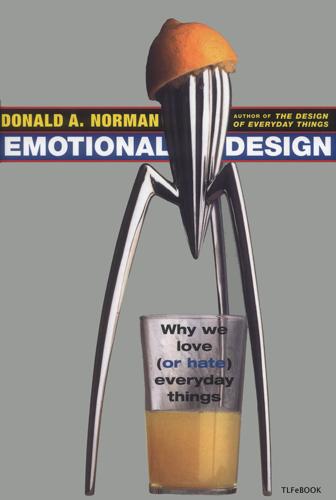
Emotional design: why we love (or hate) everyday things
by
Donald A. Norman
Published 10 May 2005
Note that the end result will be better for people as well. Thus, the drink dispenser robot would allow anyone to walk up to it and ask for a can, except that you wouldn't use infrared or radio, you might push a button or perhaps just ask. I am not alone in imagining this coevolution of robots and homes. Rodney Brooks, one of the world's leading roboticists, head of the MIT Artificial Intelligence Laboratory and founder of a company that builds home and commercial robots, imagines a rich ecology of environments and robots, with specialized ones living on devices, each responsible to keep its domain clean: one does the bathtub, another the toilet; one does windows, another manipulates mirrors.
…
I thank Paul Bradley, David Kelly, and Craig Sampson of IDEO and Walter Herbst and John Hartman from Herbst LaZar Bell. Cynthia Breazeal and Roz Picard from the MIT Media Laboratory provided numerous useful interactions, including visits to their laboratories, which contributed considerably to chapters 6 and 7. Rodney Brooks, head of the Artificial Intelligence Laboratory at MIT and a roboticist, was also a great source of information. Marvin Minsky, as always, provided much inspiration, especially with the manuscript of his forthcoming book, The Emotion Machine. I tested many of my ideas on the several bulletin boards of the CHI community (the international society for Computer-Human Interaction), and many respondents have been most helpful.
…
Unauthorized duplication is a violation of applicable law. 165 "The psychologists Robert Sekuler and Randolph Blake" (Sekuler & Blake, 1998) 166 "as happens to some emotionally impaired people" (Damasio, 1994,1999) 169 "The 1980s was the decade of the PC." Toshitada Doi, president of Sony Digital Creatures Laboratory. (Nov. 2000) 170—171 "Neal Stephenson's science fiction novel" (Stephenson, 1995) 173 "Rodney Brooks, one of the world's leading roboticists" (Brooks, 2002). The quotation is from page 125. 175 "Masahiro Mori, a Japanese roboticist": The Buddha in the Robot (Mori, 1982). The argument that we are more bothered when the robot is too close to human appearance comes from an essay by Dave Bryant (Bryant, not dated).
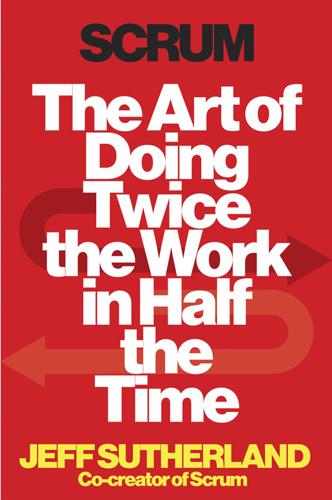
Scrum: The Art of Doing Twice the Work in Half the Time
by
Jeff Sutherland
and
Jj Sutherland
Published 29 Sep 2014
One of the robots would escape their lab and start running around the building. I’d hear the mechanical clacking of legs scurrying down the hallways. On Friday afternoons I always served wine and beer at the office so that everyone could unwind and socialize after a hard week. I’d invite the roboticists down the hall to these events, and one Friday afternoon Rodney Brooks showed up. Brooks, a professor of artificial intelligence at MIT, was one of the founders of the robot company. I asked him how the roving robots worked. “For decades we’ve tried to make a really smart thinking machine,” he told me. “We spent billions of dollars, many, many years of work, building the biggest computers we could, with the biggest databases, but all we got was a computer that can beat people at chess.”
…
Don’t Go Chasing Waterfalls More and more I realized that, if I could create a system that, like that robot, could coordinate independent thinkers with constant feedback about their environment, much higher levels of performance would be achieved. By streamlining the flow of information among “legs” of a group, we could achieve efficiencies that had never been reached before. My conversation with Rodney Brooks took place more than two decades ago. For many years he was the head of robotics and artificial intelligence at MIT, and that spidery robot I met, dubbed “Genghis Khan,” now sits in the Smithsonian as a collector’s item. By now you’re probably familiar with one of Brooks’s companies, iRobot, which makes the Roomba vacuum cleaner and uses the same adaptive intelligence to clean your floors that Genghis Khan used to chase me around my office.
…
Great empires ruled much of the world—not only Great Britain, but also France, Austria, Russia, and Ottoman. The idea that individuals were endowed with rights, rather than granted them by the powerful, was, to put it mildly, revolutionary. The “republic” was a form of government that emerged from those ideals. Like Rodney Brooks’s robot learning to walk, the United States lurched to its feet, stumbled, fell, and occasionally wandered down the wrong path. But those ideals inspired revolutions the world over, and today most major powers are governed, at least in form, by the people they purport to represent. The problem, of course, is two-hundred-plus years of bureaucratic buildup—permanent interests embedded in the very structure of the government that make it hard for people’s voices to be heard.
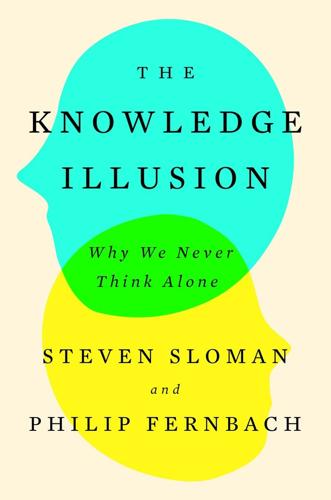
The Knowledge Illusion
by
Steven Sloman
Published 10 Feb 2017
Artificial Intelligence: The Very Idea. Cambridge, MA: MIT Press. Frame problem: For a philosophical analysis, see H. L. Dreyfus (2007). “Why Heideggerian AI Failed and How Fixing It Would Require Making It More Heideggerian.” Philosophical Psychology 20(2): 247–268. Rodney Brooks’s tic-tac-toe game: www.bostonmagazine.com/news/article/2014/10/28/rodney-brooks-robotics. Reading text with an eye tracker: Reviewed in P. S. Churchland, V. S. Ramachandran, and T. J. Sejnowski (1994). “A Critique of Pure Vision.” In ed. C. Koch and J. L. Davis, Large-Scale Neuronal Theories of the Brain. Cambridge, MA: MIT Press, 23–60.
…
And there are really fast computers today that compute extraordinarily quickly. But even today’s fastest computers are not fast enough for GOFAI. Robots today are impressive because they’ve incorporated a different style of computation into their decision-making and action, a style inspired by how animals compute. Embodied Intelligence Rodney Brooks was a computer science professor at MIT for over twenty years starting in the mid-1980s. He was at the center of the revolution in robotics. His attitude toward machines was foreshadowed when, as a twelve-year-old growing up in Australia, he built an electronic tic-tac-toe game. Rather than doing it the old-fashioned way, by programming the logic of tic-tac-toe into the software of an existing computer, he built the game from scratch, out of scrap metal, switches, wires, and lightbulbs.

Free Money for All: A Basic Income Guarantee Solution for the Twenty-First Century
by
Mark Walker
Published 29 Nov 2015
When the batteries run low, the robots return to their “feeding stations” where they recharge. They are by no means perfect but certainly much better at vacuuming than your average teenager. They also work cheaper and do not complain. Another example of robotic progress is Baxter from Rethink Robotics. Baxter is an industrial robot designed by Rodney Brooks, inventor of the Roomba robot. Let us consider the cost first. Unimate is usually credited with the installation of the first industrial robot in 1961.13 This robotic arm worked at a General Motors factory with hot die cast metal sorting and stacking. Unimate sold the robot at a loss: it cost $65 million to make and Unimate sold it for a paltry $18 million.
…
As mentioned above, the robotic revolution is being spearheaded by specific purpose-built machines. And because of this, there are very few who are able to see the revolution in all its clarity, as it requires knowledge of developments in a number of specialized domains. For example, when a reporter asked Rodney Brooks, inventor of both the aforementioned Roomba and Baxter robots, how long it might be before robots could replace McDonald’s workers, his response was very telling. Brooks claimed that “it might be 30 years before robots will cook for us.”14 His reasoning for this prediction is also interesting, “In a fast food place you’re not doing the same task very long.
…
Interestingly, there is already a robotic hamburger maker available from Momentum Machines.17 It will cook up to 360 hamburgers an hour, plus cut fresh tomatoes, lettuce, and pickles. Or consider Kura, a sushi restaurant chain in Japan that uses robotics to lower its labor costs.18 The fact that a world-class roboticist like Rodney Brooks has underestimated the robotic revolution is revealing. The reality is that we are almost at a tipping point where robots are cheaper even in an industry known for its low-cost labor.19 Indeed, what is disturbing is that even in China, with its notoriously low wages and harsh working conditions, there is a move to robotics.
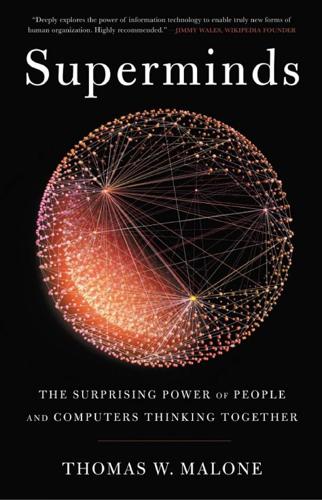
Superminds: The Surprising Power of People and Computers Thinking Together
by
Thomas W. Malone
Published 14 May 2018
Some people, like my former student and now colleague Erik Brynjolfsson and his coauthor Andrew McAfee, suggest that continuing advances in computer hardware together with the surprisingly rapid progress in artificial intelligence make it likely that machines may possess general intelligence soon.10 Others, like artificial intelligence expert Rodney Brooks, say that it may take hundreds of years.11 In fact, progress in the field of artificial intelligence has been notoriously difficult to predict ever since its early days, in the 1950s. For instance, one study by researchers Stuart Armstrong and Kaj Sotala analyzed 95 predictions—made between 1950 and 2012—about when general AI would be achieved.12 They found a strong tendency for both experts and nonexperts to predict that general AI would be achieved between 15 and 25 years in the future… regardless of when the predictions were made!
…
Stuart Russell and Peter Norvig, Artificial Intelligence: A Modern Approach (New York: Prentice Hall, 1995). 2. Alan Turing, “Computing Machinery and Intelligence,” Mind 59 (1950): 433–60. 3. Wikipedia, s.v. “artificial intelligence,” accessed August 8, 2016, https://en.wikipedia.org/wiki/Artificial_intelligence. 4. Rodney Brooks, “Artificial Intelligence Is a Tool, Not a Threat,” Rethink Robotics, November 10, 2014, http://www.rethinkrobotics.com/blog/artificial-intelligence-tool-threat. 5. David Ferrucci, e-mail message to the author, August 24, 2016. Ferrucci was the leader of the IBM team that developed the Watson technology. 6.
…
Erik Brynjolfsson and Andrew McAfee, The Second Machine Age: Work, Progress, and Prosperity in a Time of Brilliant Technologies (New York: W. W. Norton, 2014); Martin Ford, Rise of the Robots: Technology and the Threat of a Jobless Future (New York: Basic Books, 2015). 11. Brooks, “Artificial Intelligence Is a Tool”; Rodney Brooks, “The Seven Deadly Sins of AI Predictions,” MIT Technology Review, October 6, 2017, https://www.technologyreview.com/s/609048/the-seven-deadly-sins-of-ai-predictions/. 12. Stuart Armstrong and Kaj Sotala, “How We’re Predicting AI—or Failing To,” in Beyond AI: Artificial Dreams, ed. Jan Romportl, Pavel Ircing, Eva Zackova, Michal Polak, and Radek Schuster (Pilsen, Czech Republic: University of West Bohemia, 2012): 52–75, https://intelligence.org/files/PredictingAI.pdf. 13.

In Our Own Image: Savior or Destroyer? The History and Future of Artificial Intelligence
by
George Zarkadakis
Published 7 Mar 2016
According to cognitive psychologist Steven Pinker, this is the most significant discovery about AI.31 It suggests that in the second machine age, while lawyers and doctors may struggle on social benefits, gardeners and janitors will remain in business and thrive. But why is this so? Many AI researchers, including former MIT professor and current robotics entrepreneur Rodney Brooks, point out that human sensorimotor skills are not related to cognition but are the product of millions of years of evolution.32 Despite the success achieved in AI by approaching the problem of intelligence from a different angle (the ‘aeroplane’ way), one would really need to reverse-engineer evolution in order to reproduce the full capabilities of a human brain including self-awareness and high-levels of consciousness.
…
Lem was keen to argue in his novel that evolution does not necessarily lead to a species with superior intellect. Human evolution can only be regarded as accidental. Perhaps on another planet, like Regis III, nanorobots have taken over from their creators? Perhaps Regis III is Earth in the future? ‘Nouvelle AI’, a concept championed by robotics pioneer Rodney Brooks, argues that instead of trying to reproduce human intelligence in AI, we should focus on creating robots possessed of an insect-like intelligence that is capable of evolving.8 Nanotechnologists, like the visionary Eric Drexler,9 see the future of intelligent machines at the level of molecules: tiny robots that evolve and – as happens in Lem’s novel – which come together to form intelligent superorganisms.
…
Early 1980s: The Internet is invented. 1982: The 5th Generation Computer Systems Project is launch-ed by Japan. 1982: The film Blade Runner is released, directed by Ridley Scott, based on a short story by Philip K. Dick. 1989: Tim Berners-Lee invents the World Wide Web. 1990: Seiji Ogawa presents the first fMRI machine. 1993: Rodney Brooks and others start the MIT Cog Project, an attempt to build a humanoid robot child in five years. 1997: Deep Blue defeats Garry Kasparov at chess. 2000: Cynthia Breazeal at MIT describes Kismet, a robot with a face that simulates expressions. 2004: DARPA launches the Grand Challenge for autonomous vehicles. 2009: Google builds the self-driving car. 2011: IBM’s Watson wins the TV game show Jeopardy!.
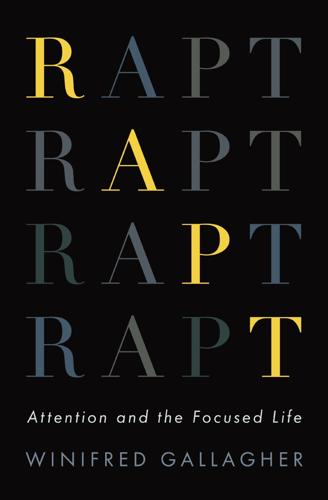
Rapt: Attention and the Focused Life
by
Winifred Gallagher
Published 9 Mar 2009
In Death of a Salesman, Arthur Miller describes the final courtesy that even the failed, deluded, doomed Willy Loman deserves, because “he’s a human being, and a terrible thing is happening to him. So attention must be paid.” Because it’s impossible to communicate, much less bond, with someone who can’t or won’t focus on you, that capacity is crucial even to exchanges between people and the interactive robots designed to do their bidding. For that reason, MIT’s Rodney Brooks, founder of iRobot, is particularly proud of Mertz, a mechanical grandchild created by his former student Lijin Aryananda, because the fetching machine adeptly expresses “beingness” by paying attention to you and engaging your attention to . . . it? Her? Mertz’s most distinctive features are the big, blinking eyes, emphasized by strong brows, that dominate its childlike, Kewpie doll head.
…
To paraphrase John Milton, “Heaven or hell?” It will depend on what we focus on. ACKNOWLEDGMENTS For their contributions to our understanding of attention and for kindly sharing their insights with me, I wish to thank George Ainslie, Marie Banich, Aaron Beck, Marlene Behrmann, George Bonanno, Thomas Bradbury, Rodney Brooks, Bill Brown, Fred Bryant, Laura Carstensen, Javier Castellanos, Tanya Chartrand, Mihály Csíkszentmihályi, Richard Davidson, Edward Deci, Angela Duckworth, Dugu Choegyal Rinpoche, Carol Dweck, Barbara Fredrickson, Howard Gardner, Joseph Giunta, Scott Hagwood, Shannon Howell, Amishi Jha, Jon Kabat-Zinn, Daniel Kahneman, Ellen Langer, Marsel Mesulam, Richard Nisbett, Donald Norman, Elinor Ochs, James Pawelski, Chris Peterson, Gail Posner, Michael Posner, Lobsang Rapgay, Mary Rothbart, Paul Rozin, Oliver Schultheiss, Barry Schwartz, Paschal Sheeran, Ann Treisman, and Leslie Ungerleider.

Our Final Invention: Artificial Intelligence and the End of the Human Era
by
James Barrat
Published 30 Sep 2013
Misgivings about AI wasn’t the only thing we shared; we also believed that time to take action and avoid disaster was running out. * * * For more than twenty years I’ve been a documentary filmmaker. In 2000, I interviewed science-fiction great Arthur C. Clarke, inventor Ray Kurzweil, and robot pioneer Rodney Brooks. Kurzweil and Brooks painted a rosy, even rapturous picture of our future coexistence with intelligent machines. But Clarke hinted that we would be overtaken. Before, I had been drunk with AI’s potential. Now skepticism about the rosy future slunk into my mind and festered. My profession rewards critical thinking—a documentary filmmaker has to be on the lookout for stories too good to be true.
…
In fact, we might even expect them to be more ethical than we are, since we don’t want to build an intelligence with an appetite for violence and homicide, right? Yet those are precisely the sorts of autonomous drones and battlefield robots the U.S. government and military contractors are developing today. They’re creating and using the best advanced AI available. I find it strange that robot pioneer Rodney Brooks dismisses the possibility that superintelligence will be harmful when iRobot, the company he founded, already manufactures weaponized robots. Similarly, Kurzweil makes the argument that advanced AI will have our values because it will come from us, and so, won’t be harmful. I interviewed both scientists ten years ago and they made the same arguments.

The Second Machine Age: Work, Progress, and Prosperity in a Time of Brilliant Technologies
by
Erik Brynjolfsson
and
Andrew McAfee
Published 20 Jan 2014
Each time the task changes—each time the location of the screw holes move, for example—production must stop until the machinery is reprogrammed. Today’s factories, especially large ones in high-wage countries, are highly automated, but they’re not full of general-purpose robots. They’re full of dedicated, specialized machinery that’s expensive to buy, configure, and reconfigure. Rethinking Factory Automation Rodney Brooks, who co-founded iRobot, noticed something else about modern, highly automated factory floors: people are scarce, but they’re not absent. And a lot of the work they do is repetitive and mindless. On a line that fills up jelly jars, for example, machines squirt a precise amount of jelly into each jar, screw on the top, and stick on the label, but a person places the empty jars on the conveyor belt to start the process.
…
But they argue that creating the bounty depends on finding ways to race with the machine rather than racing against the machine. That means people like me need to build machines that are easy to master and use. Ultimately, those who embrace the new technologies will be the ones who benefit most.” —Rodney Brooks, chairman and CTO of Rethink Robotics, Inc “New technologies may bring about our economic salvation or they may threaten our very livelihoods . . . or they may do both. Brynjolfsson and McAfee have written an important book on the technology-driven opportunities and challenges we all face in the next decade.

The Fourth Age: Smart Robots, Conscious Computers, and the Future of Humanity
by
Byron Reese
Published 23 Apr 2018
Is there some spark that makes human intelligence fundamentally different from machine intelligence? Do we each have some élan vital that animates our reasoning that machines simply do not have? Is there some X factor we aren’t even aware of that is the source of human creativity? The answer is not obvious. Consider how Rodney Brooks, the renowned Australian roboticist, views a similar question. He thinks there is something in biology about living systems that we simply don’t understand. Something really big. He termed this missing something “the juice” and described it by talking about the difference between a robot trapped in a box who methodically goes through a series of steps to escape, versus an animal that very desperately wants to free itself.
…
And finally, the Oxford University philosopher Nick Bostrom likened the current effort to build an AGI to “children playing with a bomb.” Others in the industry find such doomsday concerns to be misguided. Andrew Ng, one of the most respected AI experts on the planet, says, “There’s also a lot of hype, that AI will create evil robots with super-intelligence. That’s an unnecessary distraction.” Rodney Brooks directly answers some of the concerns above by saying that the generalizations about AI made by those who aren’t deep in the technology are “a little dangerous.” He then goes on to add, “And we’ve certainly seen that recently with Elon Musk, Bill Gates, Stephen Hawking, all saying AI is just taking off and it’s going to take over the world very quickly.

Incognito: The Secret Lives of the Brain
by
David Eagleman
Published 29 May 2011
The Brain Is a Team of Rivals 1 See Marvin Minsky’s 1986 book Society of Mind. 2 Diamond, Guns, Germs, and Steel. 3 For a concrete illustration of the advantages and shortcomings of a “society” architecture, consider the concept of subsumption architecture, pioneered by the roboticist Rodney Brooks (Brooks, “A robust layered”). The basic unit of organization in the subsumption architecture is a module. Each module specializes in some independent, low-level task, such as controlling a sensor or actuator. The modules operate independently, each doing its own task. Each module has an input and an output signal.
…
But the downside is that all patterns of behavior in these systems are prewired. Subsumption agents are fast, but they depend entirely on the world to tell them what to do; they are purely reflexive. In part, subsumption agents have far-from-intelligent behavior because they lack an internal model of the world from which to make conclusions. Rodney Brooks claims this is an advantage: by lacking representation, the architecture avoids the time necessary to read, write, utilize, and maintain the world models. But somehow, human brains do put in the time, and have clever ways of doing it. I argue that human brains will be simulated only by moving beyond the assembly line of sequestered experts into the idea of a conflict-based democracy of mind, where multiple parties pitch in their votes on the same topics. 4 For example, this approach is used commonly in artificial neural networks: Jacobs, Jordan, Nowlan, and Hinton, “Adaptive mixtures.” 5 Minsky, Society of Mind. 6 Ingle, “Two visual systems,” discussed in a larger framework by Milner and Goodale, The Visual Brain. 7 For the importance of conflict in the brain, see Edelman, Computing the Mind.

The Rationalist's Guide to the Galaxy: Superintelligent AI and the Geeks Who Are Trying to Save Humanity's Future
by
Tom Chivers
Published 12 Jun 2019
But he is – not dismissive, exactly, of all the LessWrong apocalypse stuff, but certainly wary. ‘Most people who believe in the singularity aren’t AI researchers,’ he told me. ‘They’re philosophers. Researchers try to build the machines, and therefore appreciate some of the challenges.’ I also emailed Rodney Brooks, another professor of AI, at MIT, asking to speak to him, because I knew he was highly sceptical of all this stuff, and he emailed back in an entertainingly grumpy fashion : ‘I regard the people making the claims [about AI risk], and [writing] books like yours, as “flat Earthers”.’ They are ‘completely and totally wrong’.
…
He felt that claims like Yudkowsky’s, that we face an existential threat from AI, ‘have no basis’, and this message ‘gets amplified by other people (e.g. you) writing about the baseless claims’. ‘A hype chain reaction has gone off,’ he added. ‘Each one of you begets 10 more of you.’ (I should say that Professor Brooks’ grumpiness was very self-aware and, I think, humorous. He signed off ‘Curmudgeonly yours, Rodney Brooks’. I didn’t get the impression that he was being rude, although nor did I get the impression that he would care a great deal if I did get the impression that he was being rude.) I think saying that concerns about this stuff are the preserve of cranks and philosophers is not entirely untrue, but not really fair, either.

The Singularity Is Near: When Humans Transcend Biology
by
Ray Kurzweil
Published 14 Jul 2005
Every time you use a piece of Microsoft software, you've got an A.I. system trying to figure out what you're doing, like writing a letter, and it does a pretty damned good job. Every time you see a movie with computer-generated characters, they're all little A.I. characters behaving as a group. Every time you playa video game, you're playing against an A.I. system. —RODNEY BROOKS, DIRECTOR OF THE MIT AI LAB161 I still run into people who claim that artificial intelligence withered in the 1980s, an argument that is comparable to insisting that the Internet died in the dot-com bust of the early 2000s.162 The bandwidth and price-performance of Internet technologies, the number of nodes (servers), and the dollar volume of e-commerce all accelerated smoothly through the boom as well as the bust and the period since.
…
An underlying problem with artificial intelligence that I have personally experienced in my forty years in this area is that as soon as an AI technique works, it's no longer considered AI and is spun off as its own field (for example, character recognition, speech recognition, machine vision, robotics, data mining, medical informatics, automated investing). Computer scientist Elaine Rich defines AI as "the study of how to make computers do things at which, at the moment, people are better." Rodney Brooks, director of the MIT AI Lab, puts it a different way: "Every time we figure out a piece of it, it stops being magical; we say, Oh, that's just a computation." I am also reminded of Watson's remark to Sherlock Holmes, "I thought at first that you had done something clever, but I see that there was nothing in it after all."164 That has been our experience as AI scientists.
…
We understand that speed to be the speed of light, but there are suggestions that we may be able to circumvent this apparent limit (possibly by taking shortcuts through wormholes, for example) . . . . on the Human Body So many different people to be. —DONOVANI1 Cosmetic baby, plug into me And never, ever find another. And I realize no one's wise To my plastic fantastic lover. —JEFFERSON AIRPLANE, "PLASTIC FANTASTIC LOVER" Our machines will become much more like us, and we will become much more like our machines. —RODNEY BROOKS Once out of nature I shall never take My bodily form from any natural thing, But such a form as Grecian goldsmiths make Of hammered gold and gold enamelling. —WILLIAM BUTLER YEATS, "SAILING TO BYZANTIUM" A radical upgrading of our bodies' physical and mental systems is already under way, using biotechnology and emerging genetic-engineering technologies.

Only Humans Need Apply: Winners and Losers in the Age of Smart Machines
by
Thomas H. Davenport
and
Julia Kirby
Published 23 May 2016
In one of his best-known documentaries, Fast, Cheap, and Out of Control, he offers up a character study of four people doing jobs that, at least in 1997, seemed eccentric in their obscurity: a topiary gardener named George Mendonca; a lion tamer named Dave Hoover; the world’s leading authority on the colony behavior of naked mole rats, Ray Mendez; and (this is the one that seems far less obscure today) Rodney Brooks, inventor of autonomous robots. Morris saw a connection, and a romanticism, in their various versions of control of nature. Undoubtedly he also found infectious their sheer enthusiasm for their craft. Bob Sutton of Stanford University takes a more academic interest in such people, since he studies creativity and innovation in organizations.
…
It often involves persuading and herding individuals who don’t actually report to the product manager, so it can be a challenging role. Jim Lawton, whom we also mentioned in Chapter 2, is chief product and marketing officer at Rethink Robotics, a “collaborative robotics” manufacturer in Boston. Rethink was founded and is led by Rodney Brooks, a former MIT professor, who also plays the role of chief technology officer. He handles the vision and the research. It is Lawton’s job to understand what customers want from robots and translate that into product capabilities. He’s also an evangelist for the idea that robots and people can collaborate with each other.

Ghost Road: Beyond the Driverless Car
by
Anthony M. Townsend
Published 15 Jun 2020
During the AI winters, researchers cooked up euphemistic names like “machine learning” to disguise the true nature of their AI work from funders. But today’s anxieties stem from a fuller reckoning of techniques that are widely appreciated in the AI community but whose capabilities are poorly understood beyond. Much of the angst revolves around deep learning, which has been weaponized in rhetoric far beyond its technical potential. As Rodney Brooks, the former director of MIT’s Computer Science and Artificial Intelligence Laboratory, points out, the phrase is often mistakenly used to suggest that there is “a deep level of understanding that a ‘deep learning’ algorithm has when it learns something. In fact the learning is very shallow” in comparison to genuine human learning.
…
Ann Arbor, MLive, October 6, 2017, https://www.mlive.com/news/ann-arbor/index.ssf/2017/10/can_ self-driving_pizza_deliver.html. 231“classified [Elaine Herzberg] as something other”: Ryan Felton, “Video Shows Driver in Autonomous Uber Was Looking Down Moments before Fatal Crash,” Jalopnik, March 21, 2018, https://jalopnik.com/video-shows-driver-in-fatal-autonomous-uber-crash-was-l-1823970417. 231computer-vision algorithms: Katyanna Quach, “Racist Self-Driving Scare Debunked, inside AI Black Boxes, Google Helps Folks Go with TensorFlow,” The Register, March 10, 2019, https://www.theregister.co.uk/2019/03/10/ai_ roundup_080319/. 231marking of pavement to help orient drivers: Bill Loomis, “1900–1930: The Years of Driving Dangerously,” Detroit News, April 26, 2015, https://www.detroitnews.com/story/news/local/michigan-history/2015/04/26/auto-traffic-history-detroit/26312107/. 232dinged for excessive idling: Andrew Small, “CityLab Daily: The Race to Code the Curb,” CityLab, April 2, 2019, https://www.citylab.com/authors/andrew-small/. 233“cities need to invest in the mapping in ways”: Kevin Webb (@kvnwebb), “We’re building smart ways to encode information like curb regulation,” Twitter, November 30, 2018, 1:41 a.m., https://twitter.com/kvnweb/status/1068485225607585798. 234“an exponential runaway beyond”: Vernor Vinge, “The Coming Technological Singularity: How to Survive in the Post-Human Era,” VISION-21 Symposium, NASA Lewis Research Center and Ohio Aerospace Institute, March 30–31, 1993, https://edoras.sdsu.edu/~vinge/misc/singularity.html. 234John von Neumann had raised: John Brockman, Possible Minds (New York: Penguin Press, 2019), 8. 234“AI enthusiasts have been making claims”: Vinge, “The Coming Technological Singularity.” 234“I have set the date 2045”: Christianna Reddy, “Kurzweil Claims That the Singularity Will Happen by 2045,” Futurism, October 5, 2017, https://futurism.com/kurzweil-claims-that-the-singularity-will-happen-by-2045/. 235“machine learning” to disguise the true nature: Chris Smith et al., “The History of Artificial Intelligence,” University of Washington, December 2006, https://courses.cs.washington.edu/courses/csep590/06au/projects/his tory-ai.pdf. 235“a deep level of understanding”: Rodney Brooks, “Post: [For&AI] The Origins of Artificial Intelligence,” Robots, AI, and Other Stuff (blog), April 27, 2018, https://rodneybrooks.com/forai-the-origins-of-artificial-intelligence/. 235“Contemporary neural networks do well on challenges”: Gary Marcus, “Deep Learning: A Critical Appraisal,” New York University, accessed January 22, 2019, https://arxiv.org/pdf/1801.00631.pdf. 236“If . . . driverless cars should also disappoint”: Marcus, “Deep Learning.” 236Frey tallied his predictions of the jobs: Carl Benedikt Frey and Michael A.

The Inevitable: Understanding the 12 Technological Forces That Will Shape Our Future
by
Kevin Kelly
Published 6 Jun 2016
We have preconceptions about how an intelligent robot should look and act, and these can blind us to what is already happening around us. To demand that artificial intelligence be humanlike is the same flawed logic as demanding that artificial flying be birdlike, with flapping wings. Robots, too, will think different. Consider Baxter, a revolutionary new workbot from Rethink Robotics. Designed by Rodney Brooks, the former MIT professor who invented the bestselling Roomba vacuum cleaner and its descendants, Baxter is an early example of a new class of industrial robots created to work alongside humans. Baxter does not look impressive. Sure, it’s got big strong arms and a flat-screen display like many industrial bots.
…
Two of my former colleagues at Wired, Russ Mitchell and Gary Wolf, waded through an early rough draft and made important suggestions that I incorporated. Over the span of years that I wrote this material I benefited from the precious time of many interviewees. Among them were John Battelle, Michael Naimark, Jaron Lanier, Gary Wolf, Rodney Brooks, Brewster Kahle, Alan Greene, Hal Varian, George Dyson, and Ethan Zuckerman. Thanks to the editors of Wired and The New York Times Magazine, who were instrumental in shaping initial versions of portions of this book. Most important, this book is dedicated to my family—Giamin, Kaileen, Ting, and Tywen—who keep me grounded and pointed forward.

Is the Internet Changing the Way You Think?: The Net's Impact on Our Minds and Future
by
John Brockman
Published 18 Jan 2011
Ewald Art Making Going Rural: James Croak The Cat Is Out of the Bag: Max Tegmark Everyone Is an Expert: Roger Schank Pioneering Insights: Neil Gershenfeld Thinking in the Amazon: Daniel L. Everett The Virtualization of the Universe: David Gelernter Information-Provoked Attention Deficit Disorder: Rodney Brooks Present Versus Future Self: Brian Knutson I Am Realizing How Nice People Can Be: Paul Bloom My Perception of Time: Marina Abramović The Rotating Problem, or How I Learned to Accelerate My Mental Clock: Stanislas Dehaene I Must Confess to Being Perplexed: Mihaly Csikszentmihalyi Taking on the Habits of the Scientist, the Investigative Reporter, and the Media Critic: Yochai Benkler Thinking as Therapy in a World of Too Much: Ernst Pöppel internet is wind: Stefano Boeri Of Knowledge, Content, Place, and Space: Galia Solomonoff The Power of Conversation: Gloria Origgi A Real-Time Perpetual Time Capsule: Nick Bilton Getting from Jack Kerouac to the Pentatonic Scale: Jesse Dylan A Vehicle for Large-Scale Education About the Human Mind: Mahzarin R.
…
Thus “I” am an emergent property of my body and mind; “I” (my subjective experience of the world and my self ) am a virtual machine, of sorts; but “I” (or “consciousness”) am just as real (despite being virtual) as the pull-down menu built of software—or the picture that emerges from the pixels. Like industrialization, virtualization is an intellectual as well as a technological and economic transition; like industrialization, it’s a change in the texture of time. Information-Provoked Attention Deficit Disorder Rodney Brooks Panasonic Professor of Robotics, MIT Computer Science and Artificial Intelligence Lab; author, Flesh and Machines: How Robots Will Change Us When a companion heads to the bathroom during dinner, I surreptitiously pull out my iPhone to check my e-mail and for incoming SMS. When I am writing computer code, I have my e-mail inbox visible at the corner, so that I can see if new messages arrive—even though I know that most that do arrive will be junk that has escaped my spam filters.

Human Compatible: Artificial Intelligence and the Problem of Control
by
Stuart Russell
Published 7 Oct 2019
Furthermore, it presupposes that there is a “right” objective out there in the world; it would have to be an objective on which iron-eating bacteria and humans and all other species agree, which is hard to imagine. The most explicit critique of Bostrom’s orthogonality thesis comes from the noted roboticist Rodney Brooks, who asserts that it’s impossible for a program to be “smart enough that it would be able to invent ways to subvert human society to achieve goals set for it by humans, without understanding the ways in which it was causing problems for those same humans.”31 Unfortunately, it’s not only possible for a program to behave like this; it is, in fact, inevitable, given the way Brooks defines the issue.
…
A seminal work on many philosophical topics, including the question of whether moral obligations may be perceived in the natural world: David Hume, A Treatise of Human Nature (John Noon, 1738). 31. An argument that a sufficiently intelligent machine cannot help but pursue human objectives: Rodney Brooks, “The seven deadly sins of AI predictions,” MIT Technology Review, October 6, 2017. 32. Pinker, “Thinking does not imply subjugating.” 33. For an optimistic view arguing that AI safety problems will necessarily be resolved in our favor: Steven Pinker, “Tech prophecy.” 34. On the unsuspected alignment between “skeptics” and “believers” in AI risk: Alexander, “AI researchers on AI risk.”

Four Battlegrounds
by
Paul Scharre
Published 18 Jan 2023
David Silver and Demis Hassabis, “AlphaGo Zero: Starting From Scratch,” DeepMind Blog, October 18, 2017, https://deepmind.com/blog/article/alphago-zero-starting-scratch. 298reduced compute usage to only 4 TPUs: Silver and Hassabis, “AlphaGo Zero: Starting From Scratch”; “AlphaGo,” DeepMind, n.d., https://deepmind.com/research/case-studies/alphago-the-story-so-far; David Silver et al., “Mastering the Game of Go without Human Knowledge,” Nature 550 (October 19 2017), 354–355, https://www.nature.com/articles/nature24270.epdf. 298reduced the compute needed for training by a factor of eight: Hernandez and Brown, Measuring the Algorithmic Efficiency of Neural Networks, 18. 298may make AI models available: Desislavov et al., Compute and Energy Consumption Trends in Deep Learning Inference; Sharir et al., The Cost of Training NLP Models, 3. 298AI training costs could be as much as thirty times higher: Khan and Mann, AI Chips, 26. 299costly and locks out university researchers: Rodney Brooks, “A Better Lesson,” Rodney Brooks (personal website), March 19, 2019, https://rodneybrooks.com/a-better-lesson/; Kevin Vu, “Compute Goes Brrr: Revisiting Sutton’s Bitter Lesson for Artificial Intelligence,” DZone.com, March 11, 2021, https://dzone.com/articles/compute-goes-brrr-revisiting-suttons-bitter-lesson; Bommasani et al., On the Opportunities and Risks of Foundation Models. 299contributes to carbon emissions: “On the Dangers of Stochastic Parrots”; Brooks, “A Better Lesson”; Vu, “Compute Goes Brrr”; Lasse F.
…
Its understanding of “humans” and “walking” was limited solely to the data on which it had been trained. It had no capacity to even recognize, let alone interpret and understand, a human somersaulting or hiding under a box. These limitations of AI’s narrowness are exacerbated by the tendency of humans to extrapolate AI performance on one task to related tasks, or what MIT robotics professor Rodney Brooks has called “mistaking performance for competence.” Humans interacting with AI systems are primed to expect a model of intelligence that roughly approximates our own. For example, we would not expect a human who can drive safely in traffic to suddenly steer toward a concrete barrier. Yet even AI systems that outperform humans in narrow tasks have no understanding of the tasks they are performing.

Surviving AI: The Promise and Peril of Artificial Intelligence
by
Calum Chace
Published 28 Jul 2015
But it is daft to dismiss as failures today’s best pattern recognition systems, self-driving cars, and machines which can beat any human at many games of skill. Informed scepticism about near-term AGI We should take more seriously the arguments of very experienced AI researchers who claim that although the AGI undertaking is possible, it won’t be achieved for a very long time. Rodney Brooks, a veteran AI researcher and robot builder, says “I think it is a mistake to be worrying about us developing [strong] AI any time in the next few hundred years. I think the worry stems from a fundamental error in not distinguishing the difference between the very real recent advances in a particular aspect of AI, and the enormity and complexity of building sentient volitional intelligence.”

Click Here to Kill Everybody: Security and Survival in a Hyper-Connected World
by
Bruce Schneier
Published 3 Sep 2018
The security risks from those precursor technologies are already with us, and they’re increasing as the technologies become more powerful and more prevalent. So, while I am worried about intelligent and even driverless cars, most of the risks are already prevalent in Internet-connected drivered cars. And while I am worried about robot soldiers, most of the risks are already prevalent in autonomous weapons systems. Also, as roboticist Rodney Brooks pointed out, “Long before we see such machines arising there will be the somewhat less intelligent and belligerent machines. Before that there will be the really grumpy machines. Before that the quite annoying machines. And before them the arrogant unpleasant machines.” I think we’ll see any new security risks coming long before they get here.
…
id=sjMsDwAAQBAJ. 86The US Department of Defense defines: Heather Roff (9 Feb 2016), “Distinguishing autonomous from automatic weapons,” Bulletin of the Atomic Scientists, http://thebulletin.org/autonomous-weapons-civilian-safety-and-regulation-versus-prohibition/distinguishing-autonomous-automatic-weapons. 86If they are autonomous: Paul Scharre (29 Feb 2016), “Autonomous weapons and operational risk,” Center for a New American Security, https://www.cnas.org/publications/reports/autonomous-weapons-and-operational-risk. 86Technologists Bill Gates, Elon Musk, and Stephen Hawking: Michael Sainato (19 Aug 2015), “Stephen Hawking, Elon Musk, and Bill Gates warn about artificial intelligence,” Observer, http://observer.com/2015/08/stephen-hawking-elon-musk-and-bill-gates-warn-about-artificial-intelligence. 86The risks might be remote: Stuart Russell et al. (11 Jan 2015), “An open letter: Research priorities for robust and beneficial artificial intelligence,” Future of Life Institute, https://futureoflife.org/ai-open-letter. 86I am less worried about AI: These two essays talk about that: Ted Chiang (18 Dec 2017), “Silicon Valley is turning into its own worst fear,” BuzzFeed, https://www.buzzfeed.com/tedchiang/the-real-danger-to-civilization-isnt-ai-its-runaway. Charlie Stross (Jan 2018), “Dude, you broke the future!” Charlie’s Diary, http://www.antipope.org/charlie/blog-static/2018/01/dude-you-broke-the-future.html. 87“Long before we see such machines arising”: Rodney Brooks (7 Sep 2017), “The seven deadly sins of predicting the future of AI,” http://rodneybrooks.com/the-seven-deadly-sins-of-predicting-the-future-of-ai. 87For example, there is widespread suspicion: Sean Gallagher (15 Nov 2016), “Chinese company installed secret backdoor on hundreds of thousands of phones,” Ars Technica, https://arstechnica.com/information-technology/2016/11/chinese-company-installed-secret-backdoor-on-hundreds-of-thousands-of-phones. 87computer security products from Kaspersky Lab: Cyrus Farivar (11 Jul 2017), “Kaspersky under scrutiny after Bloomberg story claims close links to FSB,” Ars Technica, https://arstechnica.com/information-technology/2017/07/kaspersky-denies-inappropriate-ties-with-russian-govt-after-bloomberg-story. 87In 2018, US intelligence officials: Selena Larson (14 Feb 2018), “The FBI, CIA and NSA say Americans shouldn’t use Huawei phones,” CNN, http://money.cnn.com/2018/02/14/technology/huawei-intelligence-chiefs/index.html. 87Back in 1997, the Israeli company Check Point: Emily G.

The Job: The Future of Work in the Modern Era
by
Ellen Ruppel Shell
Published 22 Oct 2018
“Basically people in that industry are used as an extension of a forklift. Human forklift extenders are pretty expensive. Robot arms cut that cost drastically.” Sawyer, an industrial robot created by Boston-based Rethink Robotics, offers an impressive illustration of how all-embracing those arms can be. Sawyer is the brainchild of Rodney Brooks, the inventor of both Roomba, the vacuum-cleaning robot, and PackBot, the robot used to clear bunkers in Iraq and Afghanistan and the World Trade Center after 9/11. Unlike Roomba and PackBot, Sawyer looks almost human—it has an animated flat-screen face and wheels where its legs should be. Simply grabbing and adjusting its monkey-like arm and guiding it through a series of motions “teaches” Sawyer whatever repeatable procedure one needs it to get done.
…
“Labor is the highest-cost factor” Tim Linder, “New Patent Report,” Connected World Magazine, January 28, 2014, https://connectedworld.com/new-patent-report-january-28-2014/. Sawyer (and his older brother, the two-armed Baxter robot) Dr. Brooks gave $4 per hour as the approximate cost of employing Baxter in response to a question at the Technonomy 2012 Conference in Tucson. See John Markoff, Andrew McAfee, and Rodney Brooks, “Where’s My Robot?,” Techonomy, November 2012, http://techonomy.com/conf/12-tucson/future-of-work/wheres-my-robot/. the Weather Channel broadcasts 18 million forecasts John Koetsier, “Data Deluge: What People Do on the Internet, Every Minute of Every Day,” Inc.com, July 25, 2017, https://www.inc.com/john-koetsier/every-minute-on-the-internet-2017-new-numbers-to-b.html.

On the Future: Prospects for Humanity
by
Martin J. Rees
Published 14 Oct 2018
Some experts, for instance Stuart Russell at Berkeley, and Demis Hassabis of DeepMind, think that the AI field, like synthetic biotech, already needs guidelines for ‘responsible innovation’. Moreover, the fact that AlphaGo achieved a goal that its creators thought would have taken several more years to reach has rendered DeepMind’s staff even more bullish about the speed of advancement. But others, like the roboticist Rodney Brooks (creator of the Baxter robot and the Roomba vacuum cleaner) think these concerns are too far from realisation to be worth worrying about—they remain less anxious about artificial intelligence than about real stupidity. Companies like Google, working closely with academia and government, lead the research into AI.

The Alignment Problem: Machine Learning and Human Values
by
Brian Christian
Published 5 Oct 2020
Even if we—that is, everyone working on AI and ethics, AI and technical safety—do our jobs, if we can avoid the obvious dystopia and catastrophes, which is far from certain—we still have to overcome the fundamental and possibly irresistible progression into a world that increasingly is a formalism. We must do this even as, inevitably, we are shaped—in our lives, in our imaginations, in our bodies—by those very models. This is the dark side of Rodney Brooks’s famous robotics manifesto: “The world is its own best model.” Increasingly, this is true, but not in the spirit Brooks meant it. The best model of the world stands in for the world itself, and threatens to kill off the real thing. We must take great care not to ignore the things that are not easily quantified or do not easily admit themselves into our models.
…
For more on DARPA’s Strategic Computing initiative, see “Strategic Computing.” For more on DARPA’s mid-1980s projects, see Stefik, “Strategic Computing at DARPA.” See also Roland and Shiman, Strategic Computing. 36. Moravec, “Obstacle Avoidance and Navigation in the Real World by a Seeing Robot Rover.” 37. See also Rodney Brooks’s reflections in Brooks, Flesh and Machines. 38. As per the segment on Scientific American Frontiers, Season 7, Episode 5, “Robots Alive!” Aired April 9, 1997, on PBS. See https://www.youtube.com/watch?v=r4JrcVEkink. 39. Thorpe had tested the collision-avoidance system on the Navlab by seeing if the car would brake when Leland, on a bicycle with training wheels, rode out in front of it.
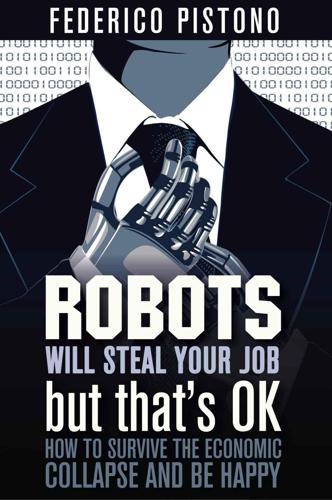
Robots Will Steal Your Job, But That's OK: How to Survive the Economic Collapse and Be Happy
by
Pistono, Federico
Published 14 Oct 2012
But how can we know if they really mean what they say, or if they understand any of it. I think the answer is that we do not know. And it could be that we cannot know, because the question does not even apply to them. Maybe intelligence is not an absolute property that exists independent from its environment, and it is us that ultimately see intelligence in others. Or, as Rodney Brooks put it:29 “Intelligence is in the eye of the observer” This is certainly a fascinating topic to dig into, and several excellent books have been written about it30; but it has little relevance when talking about how machine “intelligence” has profoundly changed our culture, and how it will dramatically change our economy and our way of living.

Choose Yourself!
by
James Altucher
Published 14 Sep 2013
In essence, people are taking what they already have—homes, cars, time—and using these assets to create wealth. Or, we can take it one step back: creating an information product that studies this trend and gives suggestions on how to make money is another way to generate income. * * * Trend #5: Robotics In 1988 I went to a lecture given by MIT professor Rodney Brooks. I was neck deep in studying the technology behind current-day robotics at the time. He said that robots don’t have to start out “smart.” They can figure out lots of small things along the way—just like humans, he said. He showed an example of a small robot that would bump into a wall a few times, then realize that a wall was there, and turn around and go a different direction.

The Economic Singularity: Artificial Intelligence and the Death of Capitalism
by
Calum Chace
Published 17 Jul 2016
But the industrial robotics industry is changing: as well as growing quickly, its output is getting cheaper, safer and far more versatile. A landmark was reached in 2012 with the introduction of Baxter, a 3-foot tall robot (6 feet with his pedestal) from Rethink Robotics. The brainchild of Rodney Brooks, an Australian roboticist who used to be the director of the MIT Computer Science and Artificial Intelligence Laboratory, Baxter is much less dangerous to be around. By early 2015, Rethink had received over $100m in funding from venture capitalists, including the investment vehicle of Amazon founder Jeff Bezos.
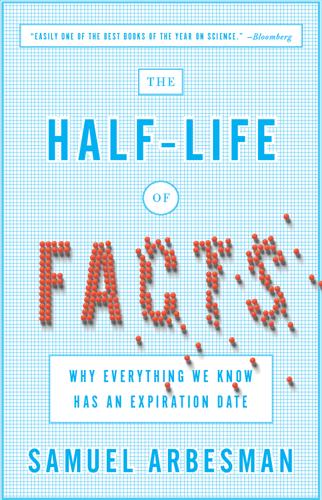
The Half-Life of Facts: Why Everything We Know Has an Expiration Date
by
Samuel Arbesman
Published 31 Aug 2012
They looked at a whole host of technological functions to see how they have changed over the years. From information storage and information transportation to how we deal with energy, in each case they found mathematical regularities. This ongoing doubling of technological capabilities has even been found in robots. Rodney Brooks is a professor emeritus at MIT who has lived through much of the current growth in robotics and is himself a pioneer in the field. He even cofounded the company that created the Roomba. Brooks looked at how robots have improved over the years and found that their movement abilities—how far and how fast a robot can move—have gone through about thirteen doublings in twenty-six years.

Immortality, Inc.
by
Chip Walter
Published 7 Jan 2020
Up to that day, every form of life that had ever existed on Earth had been honed in the crucibles of natural selection—but Venter’s team created an entirely new form of life they would call Mycoplasma laboratorium. It was a remarkable feat, and made headlines worldwide. But again, that would come later. For now, Venter willingly joined the five referees for the SENS Challenge, which included other heavy hitters like Rodney Brooks, the founder of iRobot and Roomba, and Nathan Myhrvold, formerly one of Bill Gates’s top advisers. Together, Technology Review and de Grey’s own Methuselah Foundation agreed to launch a $20,000 prize that would reward any scientist working in the field of biology who could prove that de Grey’s thinking was so wrong it was “unworthy of learned” debate.

The Smartphone Society
by
Nicole Aschoff
Not an Implacable Force Perhaps in a bid to calm growing hysteria, well-respected scientists—people actively developing algorithms, robots, and artificial intelligence—have become more emphatic of late in tamping down the hype of Silicon Valley futurism, particularly concerning the future of work. Responding to an article in the business press predicting the takeover of work by robots, Rodney Brooks, the emeritus Panasonic Professor of Robotics at MIT, called the claims “ludicrous.”38 Greg Ip, the Wall Street Journal’s chief economics commentator, characterized reports of the wholesale destruction of jobs by automation and algorithms “baffling and misguided.” Robert D. Atkinson, president of the Information Technology and Innovation Foundation, says, “No matter how many times a purported expert claims we are facing an epochal technology revolution that will destroy tens of millions of jobs and leave large swathes of human workers permanently unemployed, it still isn’t true.”39 Data scientists are also speaking up to assert that algorithms don’t take people out of the equation and they aren’t unbiased or neutral.

Other Minds: The Octopus, the Sea, and the Deep Origins of Consciousness
by
Peter Godfrey-Smith
Published 6 Dec 2016
Cuttlefish appear to have a form of rapid eye movement (REM) sleep: See Marcos Frank, Robert Waldrop, Michelle Dumoulin, Sara Aton, and Jean Boal, “A Preliminary Analysis of Sleep-Like States in the Cuttlefish Sepia officinalis,” PLoS One 7, no. 6 (2012): e38125. One central idea is that our body itself, rather than our brain: A classic general discussion is Andy Clark’s book Being There: Putting Brain, Body, and World Together Again (Cambridge, MA: MIT Press, 1997). For the robotics work, see Rodney Brooks, “New Approaches to Robotics,” Science 253 (1991): 1227–32. The paper by Hillel Chiel and Randall Beer is “The Brain Has a Body: Adaptive Behavior Emerges from Interactions of Nervous System, Body and Environment,” Trends in Neurosciences 23, no. 12 (1997): 553–57. Two interesting papers that make use of the concept of “embodiment” when thinking about octopuses are Letizia Zullo and Binyamin Hochner, “A New Perspective on the Organization of an Invertebrate Brain,” Communicative and Integrative Biology 4, no. 1 (2011): 26–29, and Hochner’s “How Nervous Systems Evolve in Relation to Their Embodiment: What We Can Learn from Octopuses and Other Molluscs,” Brain, Behavior and Evolution 82, no. 1 (2013): 19–30.

Future Crimes: Everything Is Connected, Everyone Is Vulnerable and What We Can Do About It
by
Marc Goodman
Published 24 Feb 2015
While 9/11 1.0 was about human beings’ seizing aircraft and flying them into occupied buildings for terrorist effect, 9/11 2.0 makes it possible to disintermediate the humans and use robots in their stead. We, Robot In the future, I’m sure there will be a lot more robots in every aspect of life. If you told people in 1985 that in 25 years they would have computers in their kitchen, it would have made no sense to them. RODNEY BROOKS Throughout the history of film and television, we’ve seen robots presented in a variety of lights. Some were lovable and helpful such as WALL-E, Johnny Number 5 of Short Circuit, and C-3PO and R2-D2 from Star Wars. Other robots were dangerous and out to destroy mankind, such as Gort from The Day the Earth Stood Still and the T-800s from The Terminator.
…
We’ll Soon Be Fusing Technology with Living Matter,” Wired, May 27, 2014. 4 Despite the costs: Industrial Federation of Robotics, http://www.ifr.org/industrial-robots/statistics/. 5 In just one Hyundai factory: “Car, Airbag, Money: Robots Make Cars,” video, http://channel.nationalgeographic.com/; Tamara Walsh, “Rise of the Robots: 2 Industries Increasingly Turning to Robotics for Innovation,” Motley Fool, Aug. 24, 2014. 6 Not to be outdone: Katie Lobosco, “Army of Robots to Invade Amazon Warehouses,” CNNMoney, May 22, 2014. 7 More impressive is the fact: Rodney Brooks, “Robots at Work,” World Future Society, Futurist, May–June 2013. 8 In more than 150 medical centers: “The Invisible Unarmed,” Economist, March 29, 2014. 293 Over 500,000 such operations: Stewart Pinkerton, “The Pros and Cons of Robotic Surgery,” Wall Street Journal, Nov. 17, 2013. 9 Using similar technology: Jacques Marescaux et al., “Transcontinental Robot-Assisted Remote Telesurgery: Feasibility and Potential Applications,” Annals of Surgery 235, no. 4 (2002): 300–301. 10 Though the gains: For a definitive view into the world of military robotics, see Peter W.
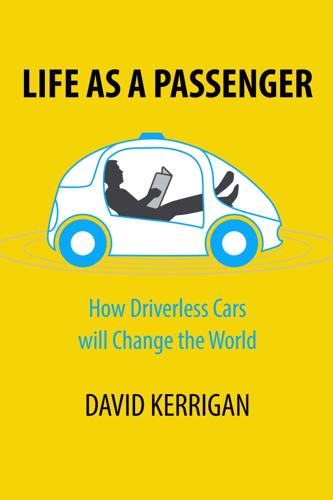
Life as a Passenger: How Driverless Cars Will Change the World
by
David Kerrigan
Published 18 Jun 2017
g=43194ac7-9d44-46f5-9e4c-9c759f8e3641 https://www.bloomberg.com/amp/news/articles/2017-05-16/waymo-s-next-challenge-making-driverless-passengers-feels-safe http://newsroom.aaa.com/2017/03/americans-feel-unsafe-sharing-road-fully-self-driving-cars/ https://www.fastcompany.com/40419374/the-future-of-autonomous-vehicles-relies-on-middle-america Negative articles include: http://www.computerworld.com/article/2599426/emerging-technology/did-you-know-googles-self-driving-cars-cant-handle-99-of-roads-in-the-us.html https://www.technologyreview.com/s/530276/hidden-obstacles-for-googles-self-driving-cars/ https://www.theguardian.com/commentisfree/2016/dec/15/the-guardian-view-on-self-driving-cars-apply-the-brakes https://www.nytimes.com/2016/12/19/opinion/google-wants-driverless-cars-but-do-we.html?_r=0 Blogs: A selection of blogs on the topic of Driverless cars: http://penguindreams.org/blog/self-driving-cars-will-not-solve-the-transportation-problem/# http://utilware.com/autonomous.html http://ideas.4brad.com/rodney-brooks-pedestrian-interaction-andrew-ng-infrastructure-and-both-human-attitudes https://medium.com/@alexrubalcava/a-roadmap-for-a-world-without-drivers-573aede0c968 http://www.newgeography.com/content/005024-preparing-impact-driverless-cars http://blog.piekniewski.info/2017/05/11/a-car-safety-myths-and-facts/ https://medium.com/@christianhern/self-driving-cars-as-the-new-toolbar-8c8a47a3c598 https://backchannel.com/self-driving-cars-will-improve-our-cities-if-they-dont-ruin-them-2dc920345618#.4va0brsyg Videos: A selection of Videos on the topic of Driverless cars: Video of Tesla Auto pilot - https://thescene.com/watch/arstechnica/cars-technica-hands-on-with-tesla-s-autopilot https://youtu.be/tiwVMrTLUWg (15 Minute TED Talk by Chris Urmson of Google, 2015) * * * [1] http://www.mckinsey.com/~/media/McKinsey/Business%20Functions/McKinsey%20Digital/Our%20Insights/Disruptive%20technologies/MGI_Disruptive_technologies_Full_report_May2013.ashx [2] http://www.morganstanley.com/articles/autonomous-cars-the-future-is-now [3] http://www3.weforum.org/docs/Media/WEF_FutureofJobs.pdf [4] https://en.wikipedia.org/wiki/Roy_Amara [5] https://twitter.com/BenedictEvans/status/763209924302090240 [6] https://en.wikipedia.org/wiki/Zeno%27s_paradoxes#Dichotomy_paradox [7] https://twitter.com/BenedictEvans/status/771115479393906688 [8] https://lilium.com/ [9] https://www.uber.com/info/elevate/ [10] The Salmon of Doubt, Douglas Adams, 2002 [11] http://farmerandfarmer.org/mastery/builder.html [12] https://global.oup.com/academic/product/innovation-and-its-enemies-9780190467036?
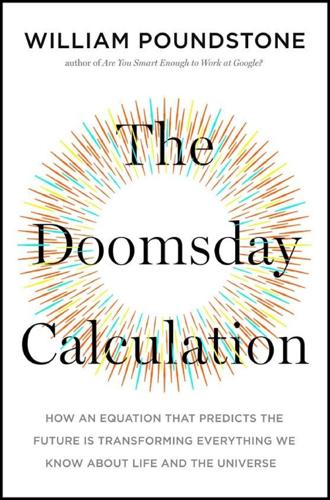
The Doomsday Calculation: How an Equation That Predicts the Future Is Transforming Everything We Know About Life and the Universe
by
William Poundstone
Published 3 Jun 2019
Better that than for an isolated team of engineers to have to invent an ethical universe over the weekend that AI becomes all-powerful. As Yudkowsky said, “I don’t think we should ignore a problem we’ll predictably have to panic about later.” In 2018 Jeff Bezos and Amazon hosted a conference in Palm Springs where neuroscientist Sam Harris debated MIT roboticist Rodney Brooks (cofounder of iRobot, known for carpet-cleaning robots). Harris expressed concern that competitors in an AI arms race would ignore precautions. “This is something you made up,” Brooks objected. Harris had no data; he was saying things that could not be proven either way. Of course, nobody has data about a technology that doesn’t yet exist.

Superbloom: How Technologies of Connection Tear Us Apart
by
Nicholas Carr
Published 28 Jan 2025
It might be possible for a dedicated contemporary Berkeleyan to construct an argument, involving extended and elaborate mental and rhetorical acrobatics, that all our earthbound skills are just mental illusions our minds conjure up for mysterious reasons. But why bother? The world doesn’t await our proof of its existence. We demonstrate its existence through our aptitude in doing things in it. Worldliness, more than anything else, is what separates the human animal from the AI machine. The computer scientist Rodney Brooks, drawing on his years of experience in building robots, believes that if artificial intelligence is ever going to rival human intelligence, it can’t stay cooped up in supercomputers or server farms. It will need to have an active, physical presence in the world. A mind trained solely on representations or models—an LLM’s neural network, for instance—is fated to produce derivative and superficial thoughts.

The Impulse Society: America in the Age of Instant Gratification
by
Paul Roberts
Published 1 Sep 2014
For more than a decade, FANUC, a Japanese builder of robots for other manufacturers, has made those robots with . . . robots, at the rate of fifty units every twenty-four hours. The FANUC facility can run, without human supervision, for days—and stops only to allow shippers to remove the completed robots.31 In the United States, meanwhile, companies are now snapping up robot technology as rapidly as it comes onto the market. Rodney Brooks, a robotics pioneer, has recently introduced a model, dubbed Baxter, that is designed to work on an assembly line. The model sells for around twenty-two thousand dollars32—less than the average factory worker’s pay—and is so easy to program that line workers will be able to “teach” it how to do tasks.

AI Superpowers: China, Silicon Valley, and the New World Order
by
Kai-Fu Lee
Published 14 Sep 2018
Artificial general intelligence would be a major turning point in the relationship between humans and machines—what many predict would be the most significant single event in the history of the human race. It’s a milestone that I believe we should not cross unless we have first definitively solved all problems of control and safety. But given the relatively slow rate of progress on fundamental scientific breakthroughs, I and other AI experts, among them Andrew Ng and Rodney Brooks, believe AGI remains farther away than often imagined. Does that mean I see nothing but steady material progress and glorious human flourishing in our AI future? Not at all. Instead, I believe that civilization will soon face a different kind of AI-induced crisis. This crisis will lack the apocalyptic drama of a Hollywood blockbuster, but it will disrupt our economic and political systems all the same, and even cut to the core of what it means to be human in the twenty-first century.

Darwin's Dangerous Idea: Evolution and the Meanings of Life
by
Daniel C. Dennett
Published 15 Jan 1995
If a particular species' brain design has already gone down the need-to-know path with regard to some control problem, only minor modifications (fine tuning, you might say) can be readily made to the existing structures, so the only hope of making a major revision of the internal environment to account for new problems, new features of the external environment that matter, is to submerge the old {377} hard-wiring under a new layer of preemptive control (a theme developed in the work of the AI researcher Rodney Brooks [e.g., 1991]). It is these higher levels of control that have the potential for vast increases in versatility. And it is at these levels in particular that we should look for the role of language (when it finally arrives on the scene), in turning our brains into virtuoso preselectors. We engage in our share of rather mindless routine behavior, but our important acts are often directed on the world with incredible cunning, composing projects exquisitely designed under the influence of vast libraries of information about the world.
…
The idea is to hand-code all the millions of facts in an encyclopedia (plus all the other millions of facts that everyone knows, so there is no point in putting them in the encyclopedia — such as the facts that mountains are bigger than molehills, and toasters can't fly), and then attach an inference engine that can update, preserve consistency, deduce surprising implications, and in general service the world-knowledge base. For an entirely different approach to AI, consider Rodney Brooks' and Lynn Stein's humanoid-robot project (Dennett 1994c). 7. Some have argued that my account of patterns in Dennett 1991b is epiphenomenalistn about content. This is my reply. 8. Since these are just boxes of truths, no support is hereby given to the "language of thought" hypothesis (Fodor 1975).

Heart of the Machine: Our Future in a World of Artificial Emotional Intelligence
by
Richard Yonck
Published 7 Mar 2017
In her book, Designing Sociable Robots, Breazeal reveals how when she saw the movie Star Wars when it first came out in 1977, she was enthralled with the droids C3PO and R2D2.8 Years later, with a degree in engineering and a background in the sciences, Breazeal was working on her master’s in artificial intelligence at MIT when she was introduced to robotics by its then director Rodney Brooks. With that life-changing introduction, Breazeal realized this was the field for which she was destined. It was in 1997—in the midst of Breazeal’s studies at MIT—that the Sojourner Rover landed on Mars, becoming the first robot to ever land on another planet. The up-and-coming roboticist found herself wondering why we could put robots in space, yet we still didn’t have them in our homes.
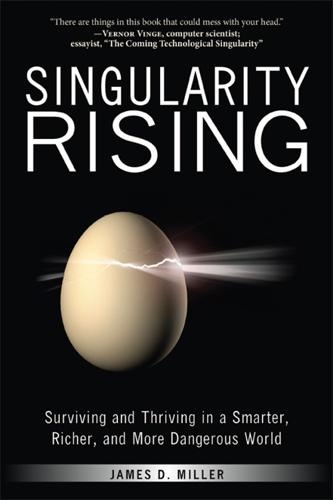
Singularity Rising: Surviving and Thriving in a Smarter, Richer, and More Dangerous World
by
James D. Miller
Published 14 Jun 2012
Every time you use a piece of Microsoft software, you’ve got an AI system trying to figure out what you’re doing, like writing a letter, and it does a pretty damned good job. Every time you see a movie with computer-generated characters, they’re all little AI characters behaving as a group. Every time you play a video game, you’re playing against an AI system. —Rodney Brooks, Director, MIT Computer Science and AI Laboratory288 CHAPTER 13 MAKING US OBSOLETE? Will Als impoverish humanity by stealing our jobs? No human occupation is safe from future AI incursions. I can imagine highly proficient robot teachers, artists, soldiers, plumbers, prostitutes, social workers, computer programmers. . . .
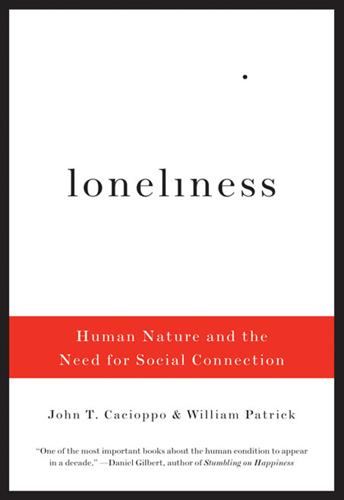
Loneliness: Human Nature and the Need for Social Connection
by
John T. Cacioppo
Published 9 Aug 2009
But human intelligence is not something operating on the basis of closed circuits locked away inside the skull. If you want to create a brain as versatile as a human brain, its intelligence—like human intelligence—must be “embodied.” This kind of information processing works from the ground up, through sensory (which means bodily) input. Rodney Brooks, who makes robots, gave up trying to make them smarter by focusing solely on symbolic processing—playing chess or doing advanced mathematics—the kind of tasks, as he told the New York Times, that “highly educated male scientists found challenging.”8 If you want to create a robot that can get along in the world, you need to give it the kind of capabilities that human toddlers need to master: knowing the difference between self and other, learning to interact with the physical environment, being able to distinguish between chalk and cheese.
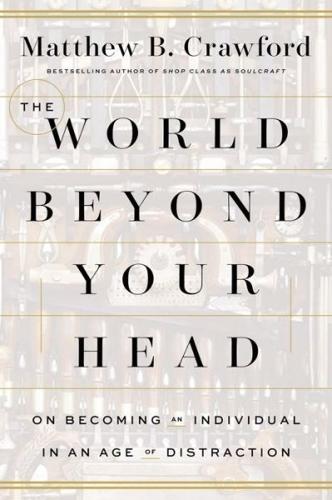
The World Beyond Your Head: On Becoming an Individual in an Age of Distraction
by
Matthew B. Crawford
Published 29 Mar 2015
Surprisingly, it is in the field of robotics that some of the most convincing evidence has emerged that inference, calculation, and representation are a grossly inefficient way to go about negotiating a physical environment. In his now-classic article “Intelligence Without Representation,” published in the journal Artificial Intelligence in 1991, Rodney Brooks wrote that “the world is its own best model.” Roboticists are learning a lesson that evolution learned long ago, namely, that the task of solving problems needn’t be accomplished solely by the brain, but can be distributed among the brain, the body, and the world. Consider the problem of catching a fly ball.

The Big Nine: How the Tech Titans and Their Thinking Machines Could Warp Humanity
by
Amy Webb
Published 5 Mar 2019
Ćirković, eds. Global Catastrophic Risks. New York: Oxford University Press, 2008. Bostrom, N., and E. Yudkowsky. “The Ethics of Artificial Intelligence.” In Cambridge Handbook of Artificial Intelligence, edited by K. Frankish and W. Ramsey. New York: Cambridge University Press, 2014. Brooks, R. A. “I, Rodney Brooks, Am a Robot.” IEEE Spectrum 45, no. 6 (2008). Brundage, M., et al., “The Malicious Use of Artificial Intelligence: Forecasting, Prevention, and Mitigation.” https://arxiv.org/abs/1802.07228. Brynjolfsson, E., and A. McAfee. The Second Machine Age. New York: Norton, 2014. Bryson, J., M. Diamantis, and T.

Rise of the Robots: Technology and the Threat of a Jobless Future
by
Martin Ford
Published 4 May 2015
A Versatile Robotic Worker Industrial Perception’s robot is a highly specialized machine focused specifically on moving boxes with maximum efficiency. Boston-based Rethink Robotics has taken a different track with Baxter, a lightweight humanoid manufacturing robot that can easily be trained to perform a variety of repetitive tasks. Rethink was founded by Rodney Brooks, one of the world’s foremost robotics researchers at MIT and a co-founder of iRobot, the company that makes the Roomba automated vacuum cleaner as well as military robots used to defuse bombs in Iraq and Afghanistan. Baxter, which costs significantly less than a year’s wages for a typical US manufacturing worker, is essentially a scaled-down industrial robot that is designed to operate safely in close proximity to people.

The Everything Store: Jeff Bezos and the Age of Amazon
by
Brad Stone
Published 14 Oct 2013
For Bezos, in addition to his family and Amazon, there’s Blue Origin, where he typically spends each Wednesday, and Bezos Expeditions, his personal venture-capital firm, which holds stakes in companies such as Twitter, the taxi service Uber, the news site Business Insider, and the robot firm Rethink Robotics. Since August of 2013, Bezos has owned the Washington Post newspaper and has said he wants to apply his passion for invention and experimentation to reviving the storied newspaper. “He invests in things where information technology can disrupt existing models,” says Rodney Brooks, the MIT robotics professor behind Rethink Robotics, which aims to put inexpensive robots on manufacturing assembly lines. “He’s certainly not hands-on but he has been a good person to talk to when various conundrums come up. When we go ask him questions, it’s worth listening to his answers.” Bezos coordinates closely with the creators of the Clock of the Long Now and oversees its quarterly review sessions, which the clock engineers call Ticks.

Arriving Today: From Factory to Front Door -- Why Everything Has Changed About How and What We Buy
by
Christopher Mims
Published 13 Sep 2021
These fulfillment center jobs are, for now at least, impossible to outsource like the factory jobs that came before them, because next-day delivery depends on the proximity of warehouses to the people who consume their contents. That doesn’t mean these jobs are safe forever, though. Roboticist Rodney Brooks once described his motivation for creating robots that could work alongside humans like this: If the trend of rising wages in developing countries continues, manufacturers will eventually run out of pools of cheap labor. At that point, if a company wants to remain competitive, the only way forward is more automation and more robots.

New Laws of Robotics: Defending Human Expertise in the Age of AI
by
Frank Pasquale
Published 14 May 2020
Staff of the US Securities and Exchange Commission and Staff of the US Commodity Futures Trading Commission, Joint Study on the Feasibility of Mandating Algorithmic Descriptions for Derivatives (April 2011), 16, 16n77, 24, https://www.sec.gov/news/studies/2011/719b-study.pdf. 28. John Markoff, “The Creature That Lives in Pittsburgh,” New York Times, April 21, 1991, http://www.nytimes.com/1991/04/21/business/the-creature-that-lives-in-pittsburgh.html?pagewanted=all; Rodney Brooks, Flesh and Machines: How Robots Will Change Us (New York: Pantheon, 2002). 29. See John Markoff, Machines of Loving Grace (New York: HarperCollins, 2015), which describes pioneering IA work by Doug Engelbart and a long line of proteges. See also Doug Engelbart, Augmenting Human Intellect: A Conceptual Framework (Washington, DC: Air Force Office of Scientific Research, 1962). 30.

The Long History of the Future: Why Tomorrow's Technology Still Isn't Here
by
Nicole Kobie
Published 3 Jul 2024
During the Lighthill debate, for instance, Donald Michie showed a video of a robot assembling bits and pieces of a toy car on a table; the idea was that this could be applied to a warehouse to assemble real cars. But obviously, real cars and factories are more complicated than toys on tabletops. So it was time for AI to leave Blocks World and enter the real world. Such was the argument made by Rodney Brooks. Own a Roomba? (Or a knockoff?) Then you have Brooks and his argument for real-life AI to thank. Beyond co-founding the robot vacuum company iRobot with Colin Angle and Helen Greiner, Brooks argued intelligence was about understanding the contextual environment and reacting to it rather than just knowledge representation and reasoning.
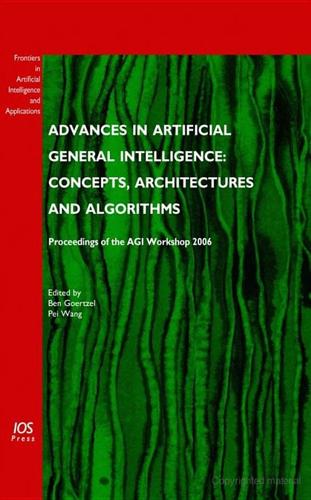
Advances in Artificial General Intelligence: Concepts, Architectures and Algorithms: Proceedings of the Agi Workshop 2006
by
Ben Goertzel
and
Pei Wang
Published 1 Jan 2007
If there was a panel like this in 1960 that was asked the very opposite question: which aspects of AGI do you think are really easy, what answers would have been given? Those would be my answers for the really hard aspects. I’m talking about things like vision and motor control, sensory stuff and perception. Rodney Brooks has a copy of a memo from Marvin Minsky, in which he suggested charging an undergraduate for a summer project with the task of solving vision. I don’t know where that undergraduate is now, but I guess he hasn’t finished yet. So these are really, really hard problems. But they are the things that all of us here, or most of us, not including me, are sort of brushing under the carpet.
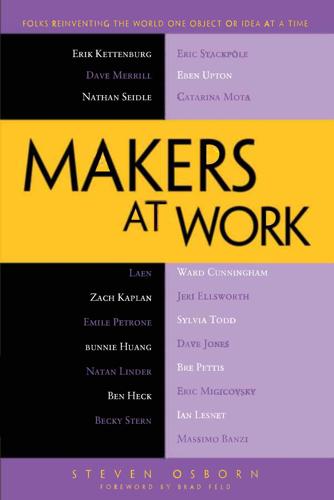
Makers at Work: Folks Reinventing the World One Object or Idea at a Time
by
Steven Osborn
Published 17 Sep 2013
So I started going to the lab and talking to people, and I ended up meeting my current advisor, Dr. Pattie Maes. She sees hundreds of people who want to come into the Fluid Interfaces Group every year and she said something like, “I think there’s good potential, but I don’t know. Let’s keep in touch.” I applied anyway. At the same time, she introduced me to Rodney Brooks—are you familiar with Rod Brooks? Osborn: I’m not. Linder: Rod used to run CSAIL, the Computer Science and Artificial Intelligence Lab at MIT. He was cofounder, chairman and CTO of iRobot. You know, Roombas, Packbots and all that. In 2008 he started Heartland Robotics. Rod was looking for a design engineer-type of person to work on the user interface.
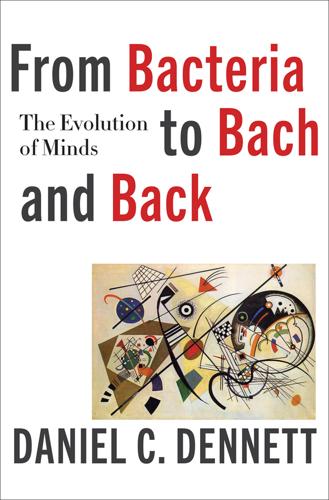
From Bacteria to Bach and Back: The Evolution of Minds
by
Daniel C. Dennett
Published 7 Feb 2017
(2004), calls such arrangements “politburo control” and notes that this top-down way to accomplish complex tasks is not the brain’s way. Economists have shown why centrally planned economies don’t work as well as market economies, and centrally planned (top-down) architectures are ineffective brain-organizers for much the same reasons. As roboticist Rodney Brooks has observed (personal communication) the hardware of existing digital computers depends critically on millions (or billions) of identical elements, perfect clones of each other almost down to the atomic level, so that they will always respond as they are supposed to respond: robotically! Engineers have managed to create the technology to print microscopic computer circuits with millions of identical flip-flops each reliably storing a 0 or 1 until ordered (from on high) to “flip the bit.”

Army of None: Autonomous Weapons and the Future of War
by
Paul Scharre
Published 23 Apr 2018
Technology, https://www.theguardian.com/technology/2017/jan/30/libratus-poker-artificial-intelligence-professional-human-players-competition. 242 “imperfect information” game: Will Knight, “Why Poker Is a Big Deal for Artificial Intelligence,” MIT Technology Review, January 23, 2017, https://www.technologyreview.com/s/603385/why-poker-is-a-big-deal-for-artificial-intelligence/. 242 world’s top poker players had handily beaten: Cameron Tung, “Humans Out-Play an AI at Texas Hold ’Em—For Now,” WIRED, May 21, 2015, https://www.wired.com/2015/05/humans-play-ai-texas-hold-em-now/. 242 upgraded AI “crushed”: Cade Metz, “A Mystery AI Just Crushed the Best Human Players at Poker,” WIRED, January 31, 2017, https://www.wired.com/2017/01/mystery-ai-just-crushed-best-human-players-poker/. 242 “as soon as something works”: Micah Clark, interview, May 4, 2016. 242 “as soon as a computer can do it”: Stuart Armstrong, interview, November 18, 2016. This point was also made by authors of a Stanford study of AI. Peter Stone, Rodney Brooks, Erik Brynjolfsson, Ryan Calo, Oren Etzioni, Greg Hager, Julia Hirschberg, Shivaram Kalyanakrishnan, Ece Kamar, Sarit Kraus, Kevin Leyton-Brown, David Parkes, William Press, AnnaLee Saxenian, Julie Shah, Milind Tambe, and Astro Teller. “Artificial Intelligence and Life in 2030.” One Hundred Year Study on Artificial Intelligence: Report of the 2015–2016 Study Panel, Stanford University, Stanford, CA, September 2016, 13. http://ai100.stanford.edu/2016-report. 243 “responsible use”: AAAI.org, http://www.aaai.org/home.html. 243 “most of the discussion about superintelligence”: Tom Dietterich, interview, April 27, 2016. 243 “runs counter to our current understandings”: Thomas G.

Robot Rules: Regulating Artificial Intelligence
by
Jacob Turner
Published 29 Oct 2018
In this section, we avoid setting out our taxonomy by referring the term “legal persons” because the philosophical status of “personality” could lead to confusion by eliding various of the characteristics which we identify as features of being a subject and an agent, respectively. See, for example, Rodney Brooks, Robot: The Future of Flesh and Machines (London: Allen Lane/Penguin Press, 2002), 194–195; Benjamin Allgrove, Legal Personality for Artificial Intellects: Pragmatic Solution or Science Fiction (DPhil Dissertation, University of Oxford, 2004). 19See, for example, Shawn Bayern, Thomas Burri, Thomas D.
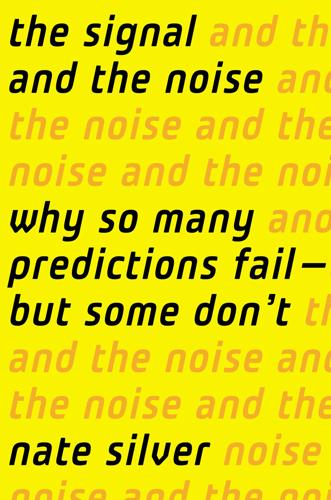
The Signal and the Noise: Why So Many Predictions Fail-But Some Don't
by
Nate Silver
Published 31 Aug 2012
This list includes Daniel Kahneman, Vasik Rajlich, Dr. Alexander “Sandy” McDonald, Roger Pielke Jr., John Rundle, Thomas Jordan, Irene Eckstrand, Phil Gordon, Chris Volinsky, Robert Bell, Tim Berners-Lee, Lisa Randall, Jay Rosen, Simon Jackman, Diane Lauderdale, Jeffrey Sachs, Howard Lederer, Rodney Brooks, Henry Abbott, and Bruce Bueno de Mesquita among others. I hope to return all these favors someday. I will start by buying the first beer for anybody on this list, and the first three for anybody who should have been, but isn’t. —Nate Silver Brooklyn, NY NOTES INTRODUCTION 1.

The Blank Slate: The Modern Denial of Human Nature
by
Steven Pinker
Published 1 Jan 2002
To appreciate what goes on in our minds when we effortlessly learn from other people, we have to imagine what it would be like to have some other kind of mind. Fortunately, cognitive scientists have imagined it for us by plumbing the minds of robots, animals, and people whose minds are impaired. The artificial intelligence researcher Rodney Brooks, who wants to build a robot capable of learning by imitation, immediately faced this problem when he considered using techniques for learning that are common in computer science: The robot is observing a person opening a glass jar. The person approaches the robot and places the jar on a table near the robot.

Enlightenment Now: The Case for Reason, Science, Humanism, and Progress
by
Steven Pinker
Published 13 Feb 2018
Cellan-Jones, “Stephen Hawking Warns Artificial Intelligence Could End Mankind,” BBC News, Dec. 2, 2014, http://www.bbc.com/news/technology-30290540. 20. In a 2014 poll of the hundred most-cited AI researchers, just 8 percent feared that high-level AI posed the threat of “an existential catastrophe”: Müller & Bostrom 2014. AI experts who are publicly skeptical include Paul Allen (2011), Rodney Brooks (2015), Kevin Kelly (2017), Jaron Lanier (2014), Nathan Myhrvold (2014), Ramez Naam (2010), Peter Norvig (2015), Stuart Russell (2015), and Roger Schank (2015). Skeptical psychologists and biologists include Roy Baumeister (2015), Dylan Evans (2015a), Gary Marcus (2015), Mark Pagel (2015), and John Tooby (2015).